Click on the button to load the content from www.googletagmanager.com.
Load content

- Tailored Vacation Planner
- Cabin Yacht Charter
- Family Sailing Holidays
- Romantic Sailing Vacations For Couples
- Sailing with friends
- Greece all inclusive yacht charter
- Croatia all inclusive yacht charter
- Food & Wine Routes
- Yacht search
- Luxury sailing

Boat vs. Ship vs Yacht: What’s the Difference?
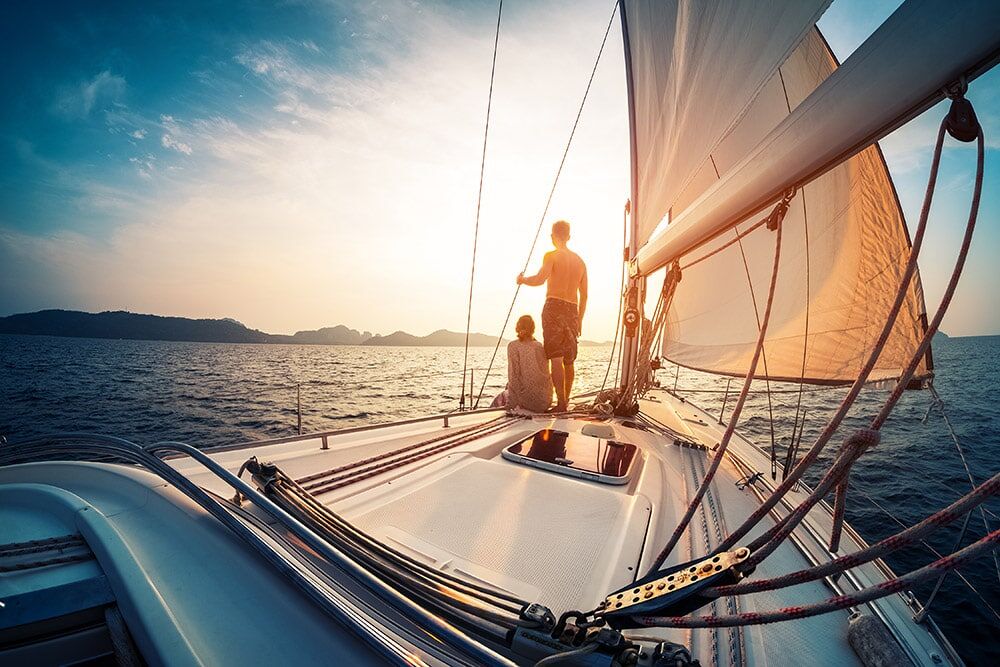
Language is a tricky thing, and picking out the differences between similar terms can be confusing. This is especially true when some of the definitions overlap. This is the case with the case of boat vs. ship vs. yacht . What’s the difference? We know in our gut that there are differences between these three seafaring vessels, but unless you’re a harbor master do you really know what counts as what?
Let’s get into some definitions, and we’re going to start with the easiest to explain: What is a yacht? What is a ship? And what is a boat?
Yacht vs. Ship vs. Boat
What is a yacht.
A yacht, I think everyone would agree, is fancier than a ship or a boat. “Yacht” infers some amount of luxury , and definitely recreation. There’s also something to be said about size. A yacht tends to be anywhere between 35 feet up to 160 feet. And some yachts, known as superyachts, go even beyond that. (Jeff Bezos just built a 417 foot yacht, but that’s really breaking yacht records.)
Because of the size, yachts tend to operate in larger bodies of water–generally the ocean. Yachts are able to handle rougher ocean waves, and they are also equipped with more advanced navigation and guidance instruments than smaller boats. Likewise, a yacht tends to have a full crew to help with the navigation, engineering, repairs, as well as having stewards that serve the yacht’s guests. This can be anywhere from a crew of four or five up to a crew of a few dozen on large yachts.
One interesting thing to note is that outside of the United States, a yacht refers to a sailboat , and a motorized yacht is called a “motor yacht”.
So, is a yacht a boat? Yes, technically a yacht is a boat. But a yacht is a very specific kind of boat.
Want to hop aboard?
Book your dream sailing vacation in top sailing destinations!
- Explore your charter options
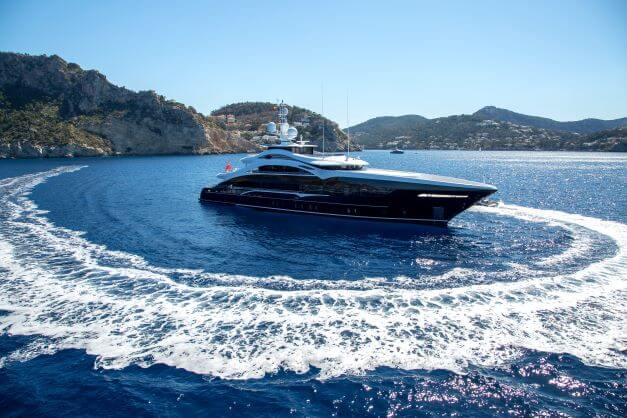
What is a Ship?
The term ship is most commonly associated with a very large boat, and something that is not as fancy as a yacht (one exception is that cruise ships can still be very fancy, but are referred to as ships because of their size and power.)
Ships are generally so large that they would never be found in a lake, with some exceptions for the Great Lakes, and are made for navigating the high seas of the open ocean. An ship can refer to a cruise ship, a naval ship, a tanker, a container ship, and many other commercial vessels.
Ships tend to have advanced navigation and technology, but much more advanced than that of a yacht due to the size, the speed, and the routes that a ship will take. They are meant to be traversing the open ocean for very long periods of time, from one continent to the next, while a yacht may only rarely set across the ocean and most often stays somewhat near land.
A ship will also have a much larger crew than a yacht or a boat. Ships are typically so large that they need not only one trained navigator but a set of navigators, plus an entire engineering team, and includes many more positions.
Finally, a ship is meant to carry things. This may be passengers, yes (in reference to cruise ships and some navy ships) but most ships are for carrying cargo–or even carrying equipment to do work on other ships including repair work or refueling.
What is a Boat?
Well, a boat is harder to define, because a yacht is technically a boat, and a ship is technically a boat. But when people refer to boats, they are almost always referring to something smaller than either a yacht or a ship. Boats may be motorized, like a speed boat, or they may sail, or they may be man-powered, like a rowboat or a kayak. Really, anything up to and including a liferaft, can be called a boat.
(As a side note that will just muddy the waters even further, submarine captains are adamant that their subs are boats. They are not ships.)
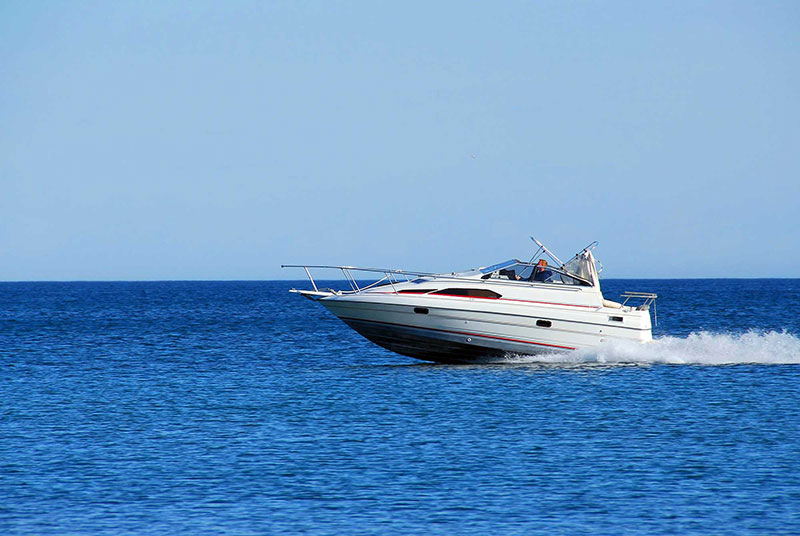
So, Boat vs. Ship Vs. Yacht?
Ultimately it comes down to this: all three of them are boats, but yachts are fancier, larger, and used for recreation, and ships are even larger, used commercially or by the navy, and are meant to cross oceans. The dividing line is sometimes thin, but generally speaking, when it comes to boats vs. ships.vs. yachts you can go by the adage “ I know it when I see it .”
Share article:
Have a question.
We have answers to your questions. So don’t hesitate to get in touch with our team today!
- GET MORE INFO
Feel free to ask us anything. All hands on deck. Let's sail
Thank you for sending us an inquiry, thank you so much for your enquiry.
Ship vs Boat vs Yacht: What's the Difference?
Navigating the vast waters of the maritime world can be both exciting and confusing. With so many different types of watercraft, it’s easy to get lost in a sea of terminology. Boats, ships, and yachts are often used interchangeably, but they have distinct characteristics that set them apart. In this article, we will set sail on a journey to understand the differences between boats, ships, and yachts. So, grab your life jacket and join us as we embark on this maritime adventure!
What is a Boat?
In simple terms, a boat is a watercraft that is smaller in size and typically used for recreational or personal purposes. Boats come in a variety of sizes, from small dinghies and rowing boats to motorboats and sailboats. They are designed for various activities such as fishing, water sports, cruising, and transportation on inland waterways. Generally, boats are powered by engines, sails, or oars, and they are ideal for navigating rivers, lakes, and coastal areas.
Boats are known for their versatility and can be found in different forms, including fishing boats, speedboats, pontoon boats, and cabin cruisers. Their compact size and manoeuvrability make them perfect for personal enjoyment and exploring smaller bodies of water.
What is a Ship?
Moving up in size, we encounter the concept of a ship. Ships are larger watercraft designed for commercial, military, or large-scale transportation purposes. Unlike boats, ships have specific characteristics that set them apart. Size is one of the defining factors, with ships being significantly larger than most boats. Ships are capable of travelling long distances across oceans and are equipped with the necessary facilities to accommodate crew members for extended periods.
Ships come in various forms, including cargo ships, oil tankers, container ships, and cruise liners. Their purpose is to transport goods, passengers, or resources on a larger scale. Ships are built to withstand rough seas and adverse weather conditions, and they often possess advanced navigational and safety systems.
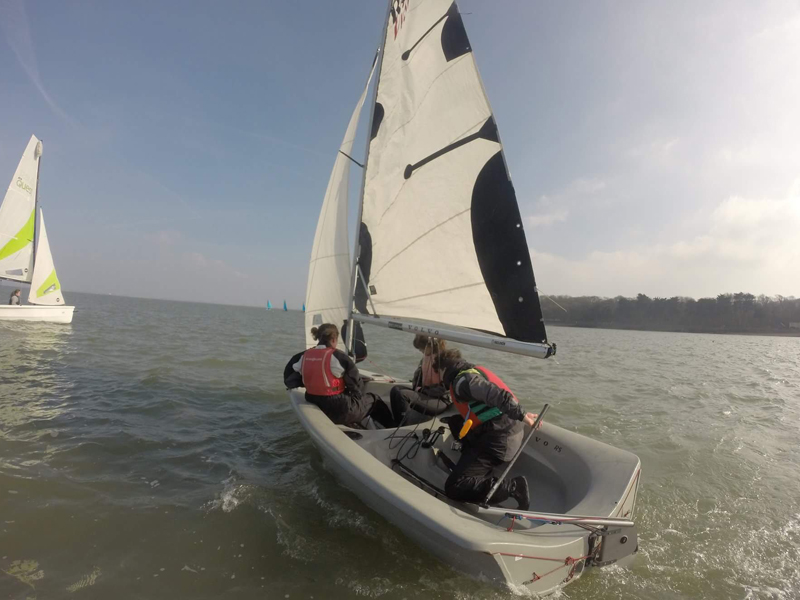
What is a Yacht?
Now, let’s set our course towards the world of luxury and leisure as we explore yachts. Yachts are watercraft that are primarily associated with private recreational use and luxury. While yachts can vary in size, they are generally larger and more luxurious than most boats. Yachts are designed to provide comfort, style, and an indulgent experience for their owners and guests.
Yachts are often equipped with luxurious amenities such as spacious cabins, lounges, dining areas, swimming pools, and even helipads. They are often a symbol of wealth and leisure, offering a wide range of recreational activities onboard. Yachts are commonly used for cruising, island hopping, and entertaining guests in style. Yachts are often crewed by professionals who ensure that the yacht and its guests receive top-notch service and attention to detail. Another key area of yachting is yacht racing which is a popular sport worldwide, for both regattas and offshore ocean racing. Yacht racing has a big following of competitors and spectators.
Find out our current yacht careers available .
What is a Superyacht?
Within the world of yachts, there exists an elite category known as superyachts. Superyachts are the epitome of luxury and extravagance. These exceptional watercraft are typically over 24 meters (79 feet) in length and offer unparalleled features and amenities. Superyachts boast multiple decks, spacious cabins, lavish interiors, state-of-the-art entertainment systems, and even onboard spas.
What sets superyachts apart is their exclusivity and customisation. They are often built to the owner’s precise specifications and incorporate the latest in design, technology, and comfort. Superyachts are a testament to engineering marvels and are synonymous with opulence and grandeur.
Explore more tips about superyachts .
Ship vs Boat vs Yacht
In terms of size, boats are the smallest, followed by yachts, and then ships, which are the largest of the three. Boats are typically used for personal or recreational purposes, while ships are primarily employed for commercial or transportation activities. Yachts, on the other hand, cater to the luxurious and leisurely desires of their owners and guests.
Another key factor that distinguishes these watercraft is their functionality. Boats are versatile and can be used for a variety of activities, such as fishing, water sports, and cruising. Ships, with their larger size and cargo-carrying capabilities, are designed for transporting goods or passengers over long distances. Yachts, as we’ve discovered, focus on providing a lavish experience and are associated with leisure and luxury or with racing.
So while boats, ships, and yachts all belong to the maritime world, they have distinct characteristics and purposes.
Start Your Maritime Career at UKSA
If you’re inspired by the world of boats, ships, and yachts and have a passion for maritime pursuits, consider embarking on a career in the industry. UKSA offers a range of courses and career development programs that can help you set sail on your maritime journey. Whether you dream of becoming a sailor, marine engineer, or yacht captain, UKSA provides the training, guidance, and support to turn your aspirations into reality. Explore the possibilities and chart a course for an exciting and fulfilling maritime career with UKSA!
Contact our team now .
Latest posts

- The Inventory
- Beyond Cars

When Is a Ship a Yacht, and When Is It Not?
The difference between the two broad categories is determined by one key factor..
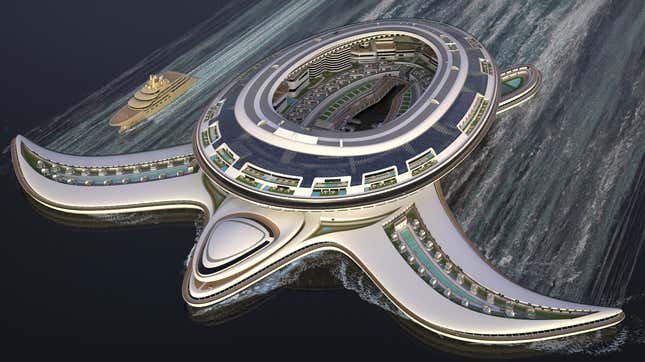
Yachts have been in the news a lot more frequently in recent years. There have been stories like when a Dutch yacht builder requested to temporarily dismantle an iconic bridge in Rotterdam to get a 417-foot-long sailing yacht commissioned by Jeff Bezos out to sea, or when authorities around the world seized the yachts of Russian oligarchs in the wake of Russia’s invasion of Ukraine. Usually, the most notable yachts have the prefixes super-, mega- and even giga- attached to convey their truly enormous sizes relative to most other privately-owned vessels.
Suggested Reading
As a result, ‘yacht’ as a term has basically become meaningless just by the sheer proliferation of private ships in recent years that defy all potential superlatives. It’s like when you say a word so often that it loses all its meaning. Why are there so many more huge luxury maritime vessels in the world? Rising levels of global wealth inequality? Technical innovation? I don’t know. The Pangeos is the latest planned monument to ostentatious wealth. The 1970-foot-long turtle-shaped ship is the brainchild of Italian designer Pierpaolo Lazzarini. However, this self-declared terayacht is not a yacht by definition.
Related Content
The only distinction between a yacht and a ship is simple: It is the vessel’s intended purpose. When you enter a foreign country, every customs agent will ask, “What is the purpose of your trip, business or pleasure?” It is the same when categorizing large water vehicles. The sole purpose of a yacht is recreation. If the craft has any other intended purpose, such as naval warfare or maritime commerce, it’s a ship. The U.S.S. Gerald R. Ford , a nuclear-powered U.S. Navy aircraft carrier, and the Carnival Celebration, a 5,280-passenger Carnival cruise ship , are both ships.
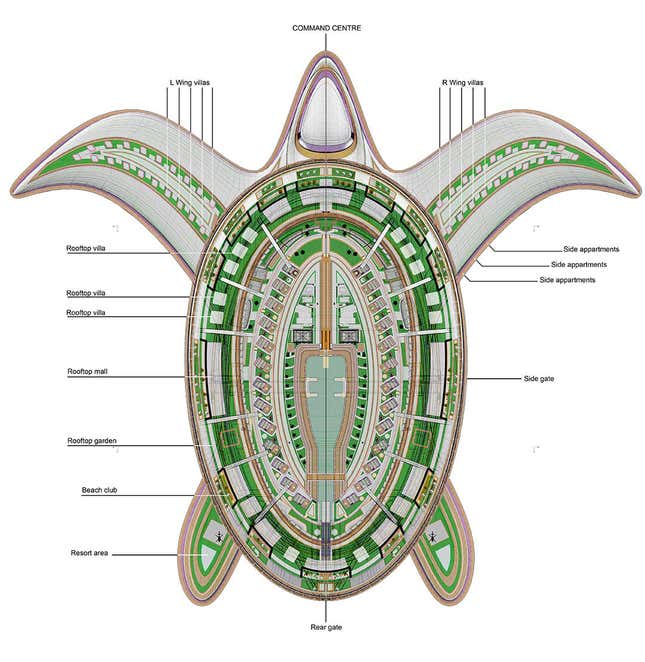
The plans for the Pangeos might feature private vacation villas and apartments. However, the absurd craft would also include also shopping malls and a hotel resort, making the Pangeos a ship. The Pangeos, named after the prehistoric supercontinent of Pangea, will likely never be built due to the ship’s $8 billion price tag.
Besides ship and yacht, boat is another commonly used term. The definition of a boat is much more vague and open to interpretation. Boats tend to be small personal craft and only carry a few people. Though, it’s common for sailors to refer to vessels of any size or purpose as a boat.
Yacht vs. Ship: What's the Difference?
Key Differences
Comparison chart, primary use, crew requirements, design focus, yacht and ship definitions, what is a yacht primarily used for, why are ships essential for global trade, how does a ship differ from a yacht in terms of size, is every luxury boat considered a yacht, how are ships powered, can a ship be used for leisure, is yacht racing a popular sport, how are ships navigated, can yachts cross oceans like ships, what type of crew does a yacht require, why are ships crucial for naval defense, how is the speed of yachts compared to ships, are ships and yachts subject to maritime laws, do yachts have classifications, what's the largest type of yacht, can ships be privately owned like yachts, how long can ships stay at sea, what amenities can be found on luxury yachts, can yachts be chartered, how are ships built to withstand rough seas.

Trending Comparisons

Popular Comparisons

New Comparisons

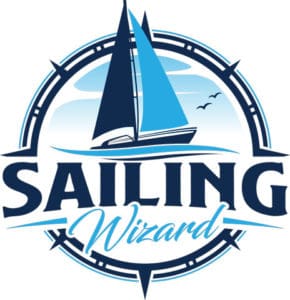
What’s the Difference Between a Boat, Yacht & Ship?
Whether you are a brand new sailor or just wanting to brush up on some terms, it is essential to know what to call a particular watercraft if you’re going to fit in while you’re at the docks or out on the water. There are many nuances and subtle differences between water vessel types, but below are some of the main differences.
In general, yachts are either sailing or motor vessels used for pleasure. Yachts are often luxurious and equipped with an overnight cabin. Boats can be either propelled sail or a motor and come in varying sizes. On the other hand, ships are usually motor-powered and much larger than boats.
Some of the differences between watercraft types can be a little fuzzy, but once you grasp the main differences between them, it becomes relatively easy to tell them apart. If you have no previous knowledge of watercraft, you are likely very confused about what defines a yacht, boat, and ship, so I’ll try to clarify any confusion you might have in the next few sections.
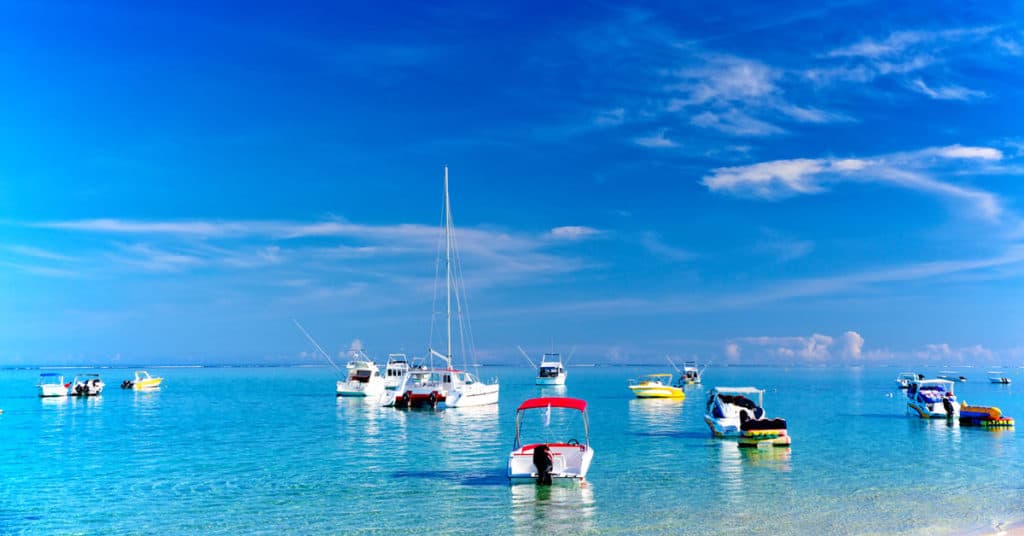
Similarities and Differences Between Boats, Yachts, and Ships
The many bodies of water all over the world are home to an extensive collection of different watercraft. There are so many shapes and sizes that they come in that it is nearly impossible to fit every single one into a specific classification.
However, in the following table, I did my best to loosely define ships, yachts, and boats so that it is easy to see the differences between the types of watercraft.
| Less than 197ft (60m) (usually ~25ft) | $15000 – $100,000+ | Pleasure, Residential, or Commercial | Motor, Wind, or Man Powered | |
| Greater than 33ft | $250,000 – $50,000,000+ | Pleasure | Motor or Wind Powered | |
| Greater than 197ft | $10,000,000 – $500,000,000+ | Pleasure, Residential, or Commercial | Motor Powered (Ancient Ships Used Wind or Man Power) |
As I mentioned earlier, it is impossible to fit EVERY SINGLE water vessel into a particular category, so there are tons of exceptions out there. In addition to the exceptions, different organizations, laws, and people classify types of boats slightly differently.
There is no universally accepted definition for ships, boats, and yachts, but instead many different sets of rules and regulations. In this article, I have tried my best to use the most commonly accepted definitions for each watercraft type.
Now that we’ve gone over some of the main differences and similarities between boats, ships, and yachts, let’s take a look at each type of vessel individually and look at their most prominent characteristics and attributes.
What Exactly is a Boat?
Boats come in a vast array of sizes and shapes. To many people, the term “boat” simply refers to nearly any watercraft, but there are actually a few restrictions and defining characteristics that all boats have. So let’s just get right into it and take a quick look at what exactly qualifies a vessel as a boat.
Overall Size of Boats
As I said before, there is a massive catalog of different types of boats, and they come in a variety of sizes. There are huge boats that hold lots of cargo or people, and then there are smaller ones that barely can stay afloat with a single person on board.
Typically, boats are defined as watercraft that are less than 197 feet long. However, most boats you are likely to encounter on the water are usually around 30 feet long.
General Price Range of Boats
Again, it is hard to accurately give a price range for all boats because they come in so many different sizes, styles, and types, but most modern boats seem to fall in the $1,500 to $100,000 range.
Small Jon boats can cost even less than $1,500, while large sailboats and houseboats can cost well above $100,000.
Most Common Uses of Boats
Boats are used all over the world for a variety of different reasons and to do many tasks. Many types of boats serve a wide range of uses, but most are primarily used as a residence, for pleasure, or commercially.
Some of the most popular types of boats, such as sailboats, bowriders, and dinghies, are commonly used for enjoyment, fishing, racing, or other pleasurable activities. There are also many types of houseboats used as residences and commercial boats used for chartering or moving goods or people.
Propulsion Method of Boats
Due to the wide variety of boats, you are likely to find boats propelled by almost every propulsion method imaginable. Some of the more popular propulsion methods for boats to use are man-power, wind power, and motor power.
Boats on the smaller end often use the power of the people on board to row or paddle, while larger boats rely on sails or powerful motors attached to the stern. Many boats use more than one propulsion method, either together or with one of them as a backup.
What Exactly is a Yacht?
Yachts have many of the same attributes as boats, but their quality, size, and luxury really set them apart. When someone says “yacht,” many people imagine watercraft that are SUPER LARGE, and while there are lots of massive yachts, many smaller boats also qualify as yachts, which might surprise you.
Overall Size of Yachts
There are many different sized yachts, and the rules regarding how big they have to be are not very strict. In general, luxury watercraft greater than 33 feet in length are considered yachts. However, boats smaller than 33 feet are sometimes called yachts if they are exceptionally luxurious and elegant.
There is no upper limit to how large a yacht can be. Yachts longer than 100 feet are often referred to as mega yachts, and ones over 150 feet long called are super yachts.
General Price Range of Yachts
Because the very definition of a yacht requires it to be very luxurious, they often come with quite a price tag as a result. There is quite a range of different price points for yachts, ranging from $250,000 to $50,000,000 and beyond.
Most Common Uses of Yachts
Yachts, because they are so expensive to maintain and purchase, are primarily used for pleasure purposes. Day trips out on the water are typical for yachts, although they often have overnight cabins, so longer excursions are popular.
Chartered yachts are also very popular, which bridges the gap between commercial and pleasure. Although, when you are on a chartered yacht, it is usually for the sole purpose of having a great time and enjoying yourself.
Propulsion Method of Yachts
Because yachts are considered very luxurious and often so large, they are usually solely propelling using motor power. Even if a yacht is on the smaller end of the spectrum, they often only use a motor as a means of driving the craft through the water.
However, many large sailing yachts out there use sails and the wind to propel the vessel. So while the large majority of yachts use motors, keep in mind that some large and luxurious sailboats can be considered yachts.
What Exactly is a Ship?
Throughout history, large ships have been a helpful tool for many civilizations and have allowed them to transport goods and explore places beyond their homes. In modern times, ships are quite common and are used for a variety of different reasons.
Overall Size of Ships
One of the primary characteristics of ships that set them apart from boats is their size. Ships, especially in modern times, are often MASSIVE and are restricted to navigating only extensive waterways.
Vessels greater than or equal to 197 feet long are often considered ships. However, most ships today are huge and often fall in the 1,000-foot range or larger.
General Price Range of Ships
Most individuals will never own a ship due to their extreme maintenance and the cost of purchasing one. While many smaller ships are far less expensive, most modern ships cost anywhere between $50 and $500 million.
Large and luxurious cruise ships can even cost upwards of $1 billion to construct, and that’s not even taking into account staff, maintenance, and other costs.
Most Common Uses of Ships
Ships perform many different duties throughout the world, but usually, they are used to transport passengers or goods over long distances. In addition, they are also often used by military, scientists, fishers, and a plethora of other professions and people. They are also often used for pleasure purposes, in the form of passenger cruise ships.
Overall, ships encompass a large selection of vessels that perform many different duties.
Propulsion Method of Ships
Due to their large size, most modern ships are propelled using motors. However, even though ships are equipped with massive motors, they are still pretty slow and often move at around 20 knots per hour, although some move much quicker.
While most, if not all, ships today use motors to propel themselves through the water, this was not always the case. Before motors were around, many civilizations used ships for military, exploration, transportation, shipping, and many other uses. During these times, ships were powered primarily by man and wind power. Even today, you can occasionally find a sail-powered ship, though they are quite rare.
James Gerard
Hi, I'm James! I started sailing at a very early age here in the UK, and have enjoyed so many opportunities to sail all over the world. I created this website to share the many sailing tips I've leaned over the years, so that you can also discover the joy of sailing with safety and confidence.
Recent Posts
How to Predict Wind Direction & Speed from a Surface Pressure Chart
Learning how to read a surface pressure chart will allow you to predict the wind speed and direction based on the weather chart. This will help you in planning your next sailing trip.
What Does a Black & Yellow Buoy Mean? (Cardinal Marks Explained)
If you see a black and yellow buoy while you're sailing, don't ignore it. Cardinal Marks are there to help you avoid hidden hazards in the water. This helpful article will help you to identify a...
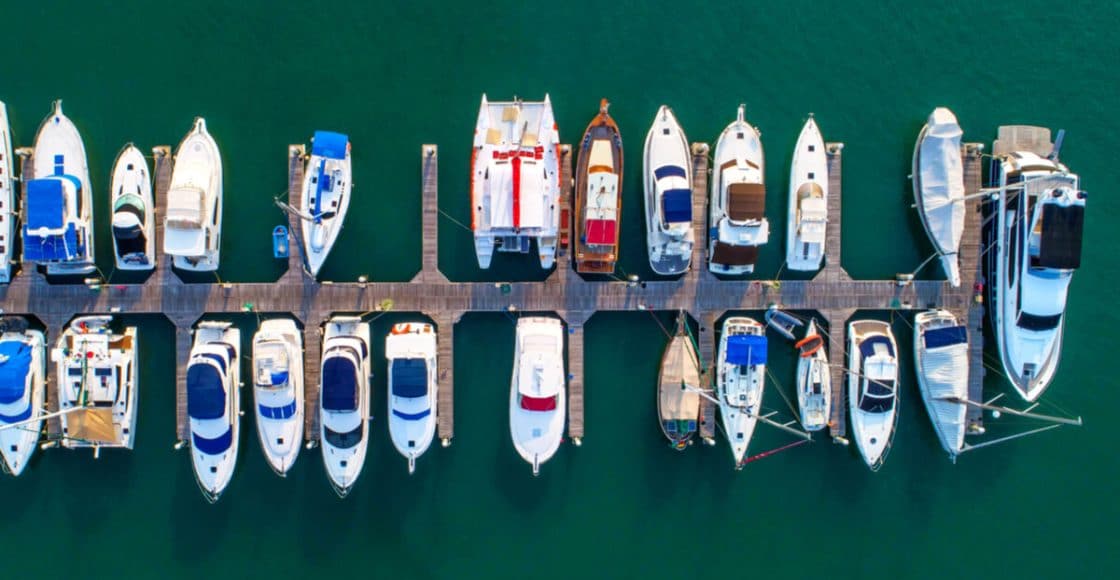
Yachts vs. Boats: What are the Differences?

Table of Contents
Last Updated on April 13, 2022 by Boatsetter Team
Many people use the words “boat” and “yacht” interchangeably, and some lean on the latter to make their ride sound more impressive. But what are the key differences between boats and yachts?
First, let’s look at some broad definitions of a boat, a yacht, and other related vessels.
- “Boat” can refer to just about any kind of vessel— towboat , fishing boat , center console , houseboat , and so on.
- “Dinghy” designates a small boat with a human or wind means of propulsion including a rowing dinghy or sailing dinghy. It also refers to a tender to a bigger boat or yacht.
- “Ship” is a large commercial boat, often used for distance travel and transport of goods or passengers – cruise ship, container ship, etc.
- “Yacht” is typically a larger boat with luxury amenities used as a recreational vessel— motor yacht , sailing yacht .
- “Superyacht” is a large yacht and is often also called a mega yacht . The delineation used to be at 80-feet but again, with today’s size creep, anything under 100 feet would just simply be called a yacht.
So, yacht or boat? Let’s dive deeper into the elements that differentiate a boat from a yacht.
Own a Boat or a Yacht? Learn How to Offset the Cost of Ownership by Listing on Boatsetter
Size of the Vessel
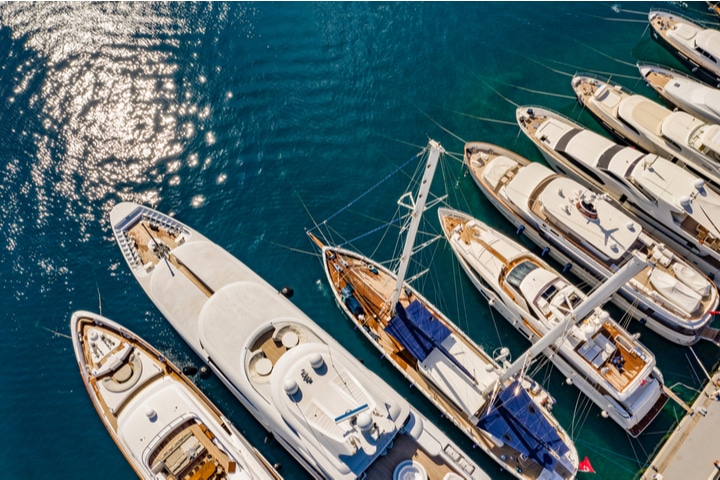
Some place a hard line at 35 feet. Below that, you have a boat and above, it’s a yacht. However, that’s an artificial differentiator.
Just 30 years ago, a 30-foot boat was considered large and could have been a yacht but as recreational boats grow longer, the term yacht has been pushed up the scale.
That said, a well-kept 40-foot boat designed for recreation can technically still be called a yacht (although larger vessels are likely to cost more, price isn’t a good indicator of yacht status primarily because it fluctuates with brand, age, and amenities).
Check out local yacht rentals near you to understand how size plays a difference.
What it’s Used For
A yacht is a vessel designed for recreational purposes. It generally operates on open waters (rather than small lakes or rivers) and has accommodations for overnight guests.
A cruise ship, on the other hand, accommodates a large number of passengers in a commercial setting whereas a yacht carries a smaller number (of paying or non-paying) passengers for private recreation.
Onboard Technology
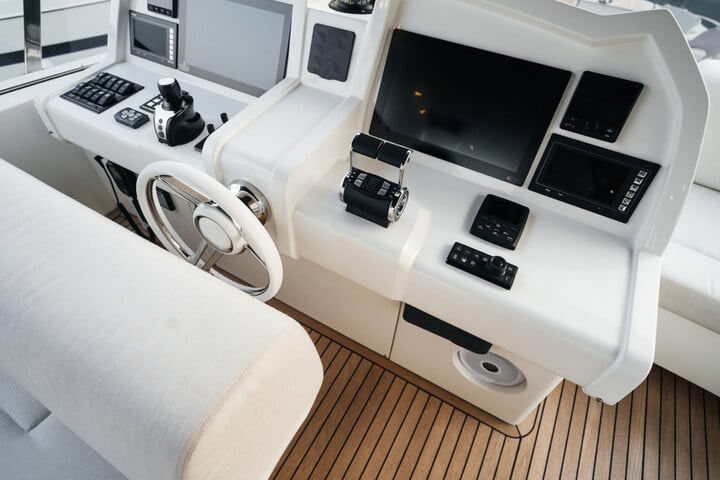
Advanced technology for navigation, communications, and system operation as well as redundant systems for safety can be found on a yacht that is likely to venture farther.
Again, there are caveats because today’s towboats that are fun day boats also feature technology such as GPS and digital switching that integrates many electrical and electronic features.
Propulsion Types
This is a tricky one. “Yacht” comes from the Dutch word “jaght” which referred to a sailing vessel that was used by the navy to capture pirate ships and later for recreation by the affluent.
Today, a yacht can be a large sailing vessel or a motor yacht. All larger yachts will have a motor for propulsion whether they have sails or not. Sailboats by design have smaller motors so trying to put a horsepower minimum on yacht propulsion is simply inaccurate.
Some define a yacht as having multiple crews to operate the vessel and tend to passengers or guests. The larger the yacht, the more crew will be required to navigate, maintain and service the vessel. That said, a couple who owns a 50-footer can call their boat a yacht although it’s owner-operated.
Luxury and Amenities
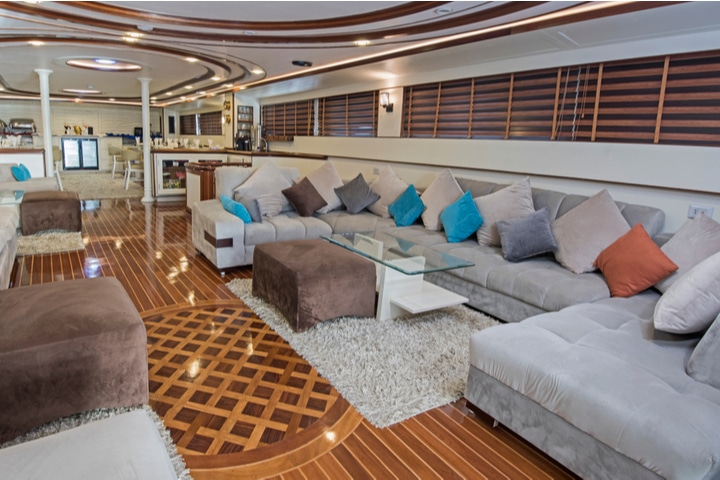
This is perhaps the best measure of a yacht. If the vessel offers accommodations, a galley , a head , and is luxurious in its presentation, it’s most likely a yacht.
That said, there are lots of center console fishing boats and towboats that are pretty nicely equipped these days and they wouldn’t be called a yacht.
All yachts are boats, but not all boats are yachts—and the lines are blurry. The word yacht elicits images of posh seafaring experiences while a boat evokes ideas of fun and perhaps work. Do some research to learn what size and type of boat or yacht is best for you .
To a degree, the point at which a boat becomes a yacht is in the ear of the beholder but if you focus on size, amenities, and the type of use, you’ll be able to discern the difference. Then all that remains is to find a way to spend time and have fun on any kind of vessel.
Browse All Available Boat & Yacht Rentals Across the Globe

Zuzana Prochazka is an award-winning freelance journalist and photographer with regular contributions to more than a dozen sailing and powerboating magazines and online publications including Southern Boating, SEA, Latitudes & Attitudes and SAIL. She is SAIL magazines Charter Editor and the Executive Director of Boating Writers International. Zuzana serves as judge for SAIL’s Best Boats awards and for Europe’s Best of Boats in Berlin.
A USCG 100 Ton Master, Zuzana founded and manages a flotilla charter organization called Zescapes that takes guests adventure sailing at destinations worldwide.
Zuzana has lived in Europe, Africa and the United States and has traveled extensively in South America, the islands of the South Pacific and Mexico.
Browse by experience

Explore articles
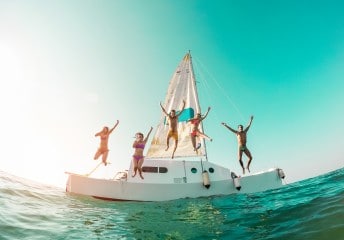
15 Things To Bring On Your Next Boat Trip
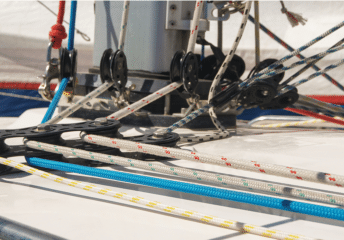
A Guide to the Different Parts of a Sailboat

How to Plan a Boat Trip
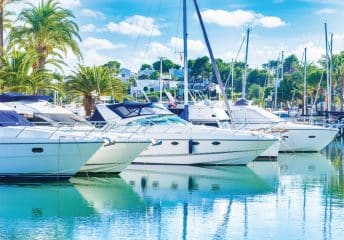
7 Innovative Ways Marinas and Ports Are Going Green
“Boat” vs. “Ship”: Chart A Course To Understand The Difference
- Boat Vs. Ship
- Yacht Vs. Boat
Ahoy, me hearties! A true seadog worth their salt would never let aboard a landlubber who calls their ship a boat . That kind of mixup is the talk that gets you walking the plank!
In this article, we’ll sail the seven seas of nautical knowledge to define the difference between the words ship and boat , explain what they refer to in technical and casual use, provide examples of different kinds of both ships and boats , and we’ll even clear up the meaning of the word yacht .
🚢 Quick summary
In casual use, the word boat is often used to refer to any watergoing vessel, regardless of its size or how it’s powered. However, large oceanfaring watercraft—those that use multiple sails or engines—are more properly called ships . In contrast, the word ship isn’t commonly applied to smaller craft. The word yacht is typically used to refer to any larger noncommercial vessel—one used for sailing or other recreation, as opposed to business.
What’s the difference between a boat and a ship ?
By definition, a boat is “a vessel for transport by water,” “a small ship,” or “a vessel of any size built for navigation of rivers or inland bodies of water.” In casual use, the word boat is used to refer to any vehicle used to travel on the water—anything from a canoe to an ocean liner.
In this kind of casual and general usage, the word boat is often used to refer to watercraft of all sizes and types, as you can see in the variety of terms that include the word, such as sailboat , motorboat , fishing boat , rowboat , tugboat , paddleboat , and lifeboat .
In contrast, the word ship is typically reserved to refer to a large, ocean-faring vessel propelled by multiple sails or engines.
(Of course, the word ship is also used to refer to large, nonwater craft, such as airship and spaceship .)
In technical, nautical contexts, the word ship sometimes specifically refers to a sailing vessel that has three or more square masts. As is the case with boat , though, the word ship is applied in the name of a variety of large watercrafts, including cruise ship , cargo ship , pirate ship , battleship , longship , and steamship .
Go Behind The Words!
- By clicking "Sign Up", you are accepting Dictionary.com Terms & Conditions and Privacy policies.
- Comments This field is for validation purposes and should be left unchanged.
In contexts where it’s important to distinguish the difference, the distinction made between ship and boat is typically based on the size of the craft being discussed and if it is used only for ocean or sea travel. Additionally, the word boat can refer to vessels that don’t have any sails or engines, such as a kayak or a rowboat, whereas the word ship usually refers to vessels with many sails or large engines. Even in casual usage, it’s very uncommon for someone to call a small craft a ship , unless they’re doing so jokingly.
One distinction made in nautical contexts is that the word ship often refers to vessels too large to fit inside other vessels. By contrast, the word boat is often used to refer to smaller craft that can fit inside larger ones. For example, a massive cruise ship may have a large number of lifeboats inside it.
What are you sailing? An ocean or a sea ? Learn the difference here.
Yacht vs. boat
The word yacht typically refers to a vessel used for private, noncommercial reasons (those other than business), such as sailing or racing. As a general term, the word yacht can refer to any watercraft that isn’t intended to be used to make money, which includes anything from racing sailboats to billionaires’ floating ultra-luxury mansions.
The word yacht is not used to refer to small vessels, such as row boats or canoes. In casual usage, a yacht may be referred to with the more general terms boat or ship , but certainly not all ships and boats are yachts .
What's the difference between "uncharted" and "unchartered" territory?
Commonly Confused

Hobbies & Passions
Word Origins
Current Events
[ kat- uh - wom -p uh s ]
- Email This field is for validation purposes and should be left unchanged.

U.S Navy Commissions USS New Jersey, First Ever Submarine For A Mixed Gender Crew

World’s Largest Hotel-Branded Superyacht Sets Sail For Maiden Voyage

India Establishes Its First Maritime Arbitration Center

Yanmar Unveils Its First Electric Propulsion Product For Emission-Free Sailing

- 7 Differences Between a Ship and a Boat
Although most people know the difference between a ship and a boat, some can get confused between the two.
While talking about the difference between a ship and a boat, the first thing that comes to mind is their sizes. Usually, people consider ships to be massive whereas boats are smaller.
However, there are other aspects too, apart from size, which are discussed in this article.
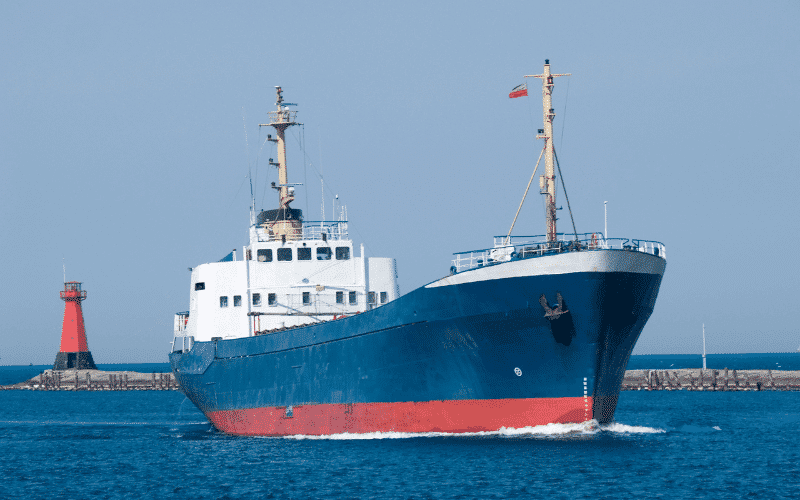
1. Size of Ship and Boat
The most important aspect while stating the difference between a ship and a boat is the size. It is said that the best way to differentiate between a ship and a boat is to remember that “A ship can carry a boat, but a boat cannot carry a ship.”
Technically speaking, a mode of water transport that weighs at least 500 tonnes or above is categorised as a ship. In comparison, boats are small in their structural size and displacement.
2. Operational Areas
Ships ply in deep waters, oceans and high seas. They are of various types like cruise vessels , naval ships, tankers , container ships , RoRo ships , and offshore vessels . They are mainly built for cargo/ passenger transportation across oceans.
Boats, in contrast, operate in restricted waters, near the coast and include ferrying and towing vessels, sail vessels, paddle vessels, kayaks , canoes , patrolling boats etc.
3 . Navigation and Technology
Boats are simple vessels with less complicated equipment, systems and operational maintenance requirements. Since ships are huge and carry large volumes of cargo over large distances, they feature advanced engineering, heavy machinery, and sophisticated navigational systems .
4. Crew Size
This is one of the major differences between a ship and a boat.
Ships have a large crew which consists of the Captain who commands the vessel, Second and Third Officers, Engineers, Cooks etc.
On the other hand, a smaller boat does not need many people.

5. Cargo Capacity
A boat is hardly used for carrying cargo. It is mostly used for recreational purposes like boating, fishing or ferrying people across short distances. Ships are built to be seaworthy since they carry thousands of tonnes across different ends of the planet.
Ships can also accommodate passengers or boats, whereas boat is a generic term used for a variety of watercraft.
6. Construction and Design
When it comes to construction and design, ships are complicated structures with various onboard machinery systems and equipment to ensure they are safe and stable to cross the rough seas.
A boat has a simple design and almost no machinery, though sophisticated ones have navigation systems, however they do not take up much space.
7. Propulsion
A boat can be powered by sails, motor, or human force, whereas a ship has dedicated engines. (Ships can also be propelled by sails or other advanced propulsion technologies)
Even though all vessels on the high seas are referred to as ships, submersible vessels are categorically termed as ‘boats.’
This is mainly because earlier, submersible vessels could be hoisted on ships till they were used in naval operations.
However, while talking about differences between a ship and a boat, only the vessels floating on the water surface are taken into consideration.
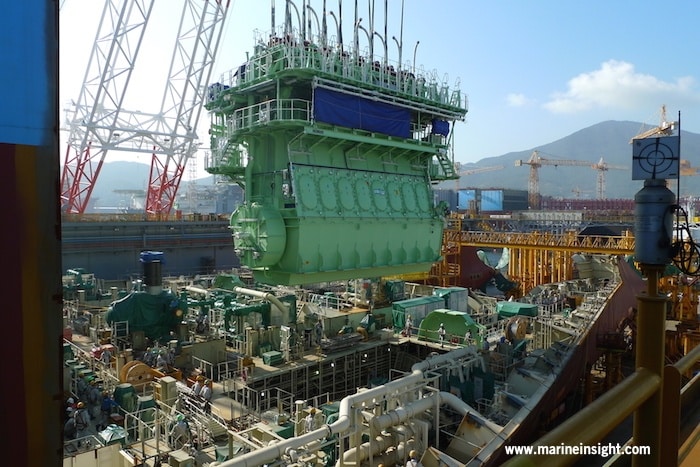
The use of the term ‘ship’ or ‘boat’ also depends on the region it is being used in. People often refer to a medium-sized fishing vessel as a boat, a medium-sized ferry or a recreational boat as a ship. As can be seen, people tend to generalise a vessel based on its size.
However, it is to be noted that the difference between a ship and a boat depends on many factors as discussed above.
You might also like to read:
- Types of Sailboats: A Comprehensive Classification
- A Guide to Different Types of Boats
- A Guide To Types of Ships
- Types of Fishing Vessels
Disclaimer : The information contained in this website is for general information purposes only. While we endeavour to keep the information up to date and correct, we make no representations or warranties of any kind, express or implied, about the completeness, accuracy, reliability, suitability or availability with respect to the website or the information, products, services, or related graphics contained on the website for any purpose. Any reliance you place on such information is therefore strictly at your own risk.
In no event will we be liable for any loss or damage including without limitation, indirect or consequential loss or damage, or any loss or damage whatsoever arising from loss of data or profits arising out of, or in connection with, the use of this website.

Do you have info to share with us ? Suggest a correction

About Author
Raunek Kantharia is a marine engineer turned maritime writer and entrepreneur. After a brief stint at the sea, he founded Marine Insight in 2010. Apart from managing Marine Insight, he also writes for a number of maritime magazines and websites.
Read More Articles By This Author >
Daily Maritime News, Straight To Your Inbox
Sign Up To Get Daily Newsletters
Join over 60k+ people who read our daily newsletters
By subscribing, you agree to our Privacy Policy and may receive occasional deal communications; you can unsubscribe anytime.

BE THE FIRST TO COMMENT
46 comments.
Please i am a National Diploma student of Maritime Academy of Nigeria Oron studying nautical science, i want to know more about the course
Hi.thank its so good and sufficient
As a profesional mariner of over 25 years I would like to “weigh in” on this subject. What I will say is not about the currently accepted distinction between ship and boats, but rather historical. When ships (powered by sails) began to start losing trade to vessels powered by engines (boats) they as an industry attempted to associate these vessels with unplesant attributes like noise, soot, vibration, and in some cases slower speed. The sailoing industry (both cargo and passanger) would say that you could SAIL on a quiet, clean, calm, fast ship or go one of those dirty loud vibrating slow BOATS with an engine. The concept a ship being superior and a boat being inferior was sucessfully instituted. The engine powered vessels simply side stepped the ridicule bestowed on the term “boat” and made bigger, faster, clean, quiet vessels and took the market from the sail powered vessels along with the defination of SHIP for themselves. i wont step into the curret debate of what constitutes a boat or a ship but the origins of the debate stem from new technology (steam engines) fighting over market share.
A large freighter (1000′ x 85′, think of the Edmund Fitzgerald) hauling iron ore on the great lakes is referred to by her crew and company as a boat, never as a ship!
“Boats in contrast, are operable in smaller/ restricted water areas and include ferrying and towing vessels, sail vessels, paddle vessels, kayaks, canoe, patrolling vessels etc. Boats are mainly used for smaller purposes and mainly ply in areas near to the coast.” “Technologically, boats are simple vessels with less complicated equipment, systems and operational maintenance requirements.”
Correct me if I am wrong but, isn’t a submarine classed as a boat? That kind of contradicts what you have stated above.
comment:the any where abroad/indian officers you can any time call me on 30 year’s on merchant officers
You can put a boat on a ship but not visa versa eg life boats…
What is the difference between a boat and a ship?
1. The boat leans to the right when turning right
2. The ship leans to the left when turning right.
This is what I have been told by a old (90 Year old boat capt)
Great reply’s. some years ago while on the QE 2 a passenger asked one of the officers when does this boat dock? The young officer replied. “Madam, this is a Ship not a boat, a boat is those you get into when this ship is sinking!
Hello. May I please ask for some assistance from the forum?
I am writing a blog/journal on the differences between ships and yachts. What has prompted this conversation is the plethora of ‘superyachts’ now plying the international oceans and performing well on deep water passages.
Surely some of these can come under the category of ‘ship’, and not yacht, since many are being built on a larger scale than anything we’ve seen in past years. My understanding of the determination of a ‘ship’ is : Length, Tonnage, Draft and Displacement.
I have read your forum discussion regarding use, but I am still unclear as to where the line is drawn for this category. Many of the ‘superyachts’ carry cars, helicopters, pools, and require very advanced equipment, captain and crew. Perhaps we will soon see this as a real conversation in the industry.
Appreciatively, Rosanne Allen-Hewlett For ‘The LUXE Report’ ( Sailor, racer of only boats and yachts )
I was told that the difference between a ship and a boat is that a ship has a funnel and a boat doesn’t, no matter it’s size….
David Musselwhwite’s comment is the best way to determine a boat of a ship. This holds true for submarines (boats). If it leans into the turn, it is a boat. If it leans out on a turn, it is a ship.
In response to comments about the Edmund Fitzgerald, when you spend your life on one you can call it whatever you want. I am sure they all knew it was a ship, I served 20 years in the Navy and always said I was heading back to the boat even though I knew it was a ship.
While in Boot camp in 1964, US Coast Guard, we were told that a ship is 95 feet or longer and a boat is 94 feet and under. That makes it pretty simple.
With over 30 years in the marine industry including working at sea, ship building and ship repair, I would offer my comments.
Yes all above is true. My understanding is that the bottom line is ” a Ship carries boats ie Lifeboats”. If it doesn’t have a proper lifeboat, it is not a ship.
The best a boat has is dinghies or liferafts etc. Consequently a submarine does NOT carry life boats. There are many broader requirements Size and the ability to navigate very heavy seas, such as those whipped up by a tropical Revolving storm (TRS). It must be designed to travel in the open sea in all weather conditions and have lifeboats that can do the same. They carry cargo or passengers and have a substantial crew to operate it including engineers.
As far as the Edmund Fitzgerald is concerned, these vessels are an enigma. They were large and qualify in most areas, but – was it capable of going to sea and did it have sea-going lifeboats? Ironically it suffered probably as bad a storm as it would have done at sea. The problem is that in fresh water the waters are more treacherous than salt water as they rise up far more quickly.
But then again it sank meaning that it couldn’t handle it. Yes it was a large vessel but was it a Ship – ?
What is difference among?
Marine Boat Marine Ship Marine Craft Ship Boat
What is difference between Marina and Marine?
Being the son of a WW II submariner. My dad cruised the Atlantic of the east coast of US and in many conversations about the war he always called his boat a boat never a ship.Thats it!!
The simplest and most accurate definition I stay with is that a ship can carry a boat but a boat cannot carry a ship . SIZE MATTERS !
Captain chalga: try to form a coherent sentence.
I asked a friend of mine, “What is the difference between a boat and a ship?” He said, “About 100 feet . . .”
Thank you for the information. My husband won this discussion. God Bless all who are bravely floating on/in one. I am terrified of the ocean or even a small lake. You have my utmost respect for your sacrifice. I love seafood but would never know the pleasure of eating it without you brave souls. Thank you.
As a proud Submariner I have to disagree and will always say that I serve on a boat.
There is the Boat of Millions of years,which is a very advanced spacecraft able to.travel the millions of light years betwen Galaxies.
And you have vessels such as the Motor Vessel Arlene out of Port Arthur.
I was once told that a ship had multiple decks and a boat had only one.
When I queried sailing yachts that had berths under part of the deck, it was modified to the deck on a yacht is as much structural as deck, but if a vessel has 2 or more non structural “floors” it is a ship.
Then I mentioned tug boats and fishing boats and it all got confused.
It’s a bit like the difference between horse and pony. Despite every one saying it’s size, the falabella is a horse and polo ponies are ponies.
A naval architect (constructors) view is that to be a ‘ship’ a vessel must have at least one continuous internal deck running the length of the vessel. Large Submarines may have complete decks forward however, going aft, it is normal to have to descend a ladder onto a lower ‘engine room’ deck-level or platform. Some large freighters have a similar construction with internal split deck levels and that is why they are correctly known as boats, although in some cases the term ‘ship’ feels more appropriate because of their large displacement. The argument regarding leaning into or out of a turn is an interesting idea, however this may have more to do with hull and propulsion characteristics than vessel construction. In reality, as with most nautical expressions, whatever feels best to use is probably best and relying on the opinion of a sailor, with regards to an explanation of nautical expressions, puts you at the mercy of a sharp sense of humour.
It might be worth mentioning that some might refer to a ship as “boat” as a diminutive term of endearment, similar to the personification of a car or a pet by assigning the human pronouns to them.
I was once told a SHIP sails the oceans, a BOAT sails on rivers and lakes.
IT SEEMS WE HAVE VERY KNOWLEDGEABLE SEA MEN IN THE HOUSE . BUT I AGREE TOTALLY WITH JEREMY MEYER
It’s always been my info is that a boat can be up to 197’ whereas a ship is over that length. As with anything, I’m sure there are exceptions.
some of the people got it spot on. Tilt away from direction of turn = ship. Tilt towards the direction of turn = boat.
There are two points on every vessel. Center of buoyancy and center of gravity. A ship’s center of gravity is above its center of buoyancy. A boat’s center of gravity is below its center of gravity.
Anyone can answer me why we only know the bareboat charter for any size of the ship? It never mentions bareship charter?
“some of the people got it spot on. Tilt away from direction of turn = ship. Tilt towards the direction of turn = boat. There are two points on every vessel. Center of buoyancy and center of gravity. A ship’s center of gravity is above its center of buoyancy. A boat’s center of gravity is below its center of gravity.”
Except a kayak (or canoe) is like a ship – cg is above cb. If you get a ruddered kayak up to speed and hit the rudder hard it will heel outward like a ship. Since the paddler can easily influence heel, if you want to make a hard turn you heel the ‘boat” outward (to lessen the ends in the water) and sweep stroke on the outward side to spin the “boat”. Is a kayak then a “ship”? Hardly. This is exactly the problem with trying to make one pithy statement to define a ship or boat. It is far more complex than that.
I completely agree with you that the difference between a ship and a boat is the size. One of my friends have a boat, she bought it from Boat Lagoon Yachting. Thanks for sharing!
If you can haul it on the back of truck (even trailered), it’s likely a boat…but if the anchor weighs in like a truck it’s definitely a ship. Obviously, some subs are one or the other regardless of whether you can stuff a (non-inflatable) life boat inside. [Army logic from qualified ex-boat commander, combat support boats, bridge section, Corps of Engineers.]
I grew up near the Welland Canal, and it’s true: vessels which plied the Great Lakes were called “lake boats”, or more commonly, “Lakers”. Oceangoing vessels a were always and reflexively called “ships”..
I am wondering if the naval architect”s comment about internal decks makes the difference, as even a non-engineer can see that a deck extending stem to stern would provide more stability to a vessel’s structure.
The lake boats are always longer than the ocean-going ships, so it’s not size.And we occasionally get a visit from “tall ships”, which are oceangoing sailing vessels, but relatively short.
That’s really informative post. I appreciate your skills, Thanks for sharing.
I will take a shot at this. The word marine is redundant before ship and boat. The word “marine” relates to the sea and one of the conditions of being a ship is that it is ocean going. This does leave the possibility of not being a river boat but a marine boat. I would use the expression sea-going boat.
Marine craft is a useful expression when there is a need to make it cleat that you are not referring an aircraft, space craft etc.
On a general note there are no absolute rules or definition. All we can do is give examples of how the words are used. Companies, governments, navies and anyone else are free to make gheir own definitions but nobody else is bound by them.
I served on the U.S.S. CG-19 ‘THE DZLE & U.S.S. CV-63 KITTY HAWK FOR THE US NAVY in the 80’s. So what about the placement of the helm being center of Bridge on a ship & on starboard side usually on a boat?
With many years of sailing lakes to blue water sailing and large power yachts I can offer this for abot of levity. Afterall,the SeaView had the ‘Flying Sub” flown or driven undersea,on the surface and flown by Captain,Admirals and sadly Polititians and insane quasi research criminals. The Flying Sub also had an inflatable Zodiac,so both could be considered Life saving vessels. Plus,it was really cool!
Can be as difficult as we want. My training was as a NCO (enlisted man in the USN. As others have stated, A ship will lean away from its turn. A boat will lean into the turn. This is naturally due to there the center line of gravity is located. Cargo ships mass above that line. A boat can be loaded onto a ship (lifeboats). Regarding Submarines, they are affectionately referee to , by the crew, as boats and that goes back to WWI /II, the ELB. Electric Boat Div of General Dynamics, located Groton Connecticut .
This design is wicked! You obviously know how to keep a reader entertained. Between your wit and your videos, I was almost moved to start my own blog (well, almost…HaHa!) Fantastic job. I really loved what you had to say, and more than that, how you presented it. Too cool!
More importantly… are they all “She’s” ?
I’ve been wondering about this since I was younger and saw The Hunt for Red October. The COB (Chief of the Boat) was an interesting character, and I wondered by a Sub Chief was called Chief of the Boat, if a sub was a naval ship. Some very interesting and fascinating answers in here! I like the one about how a ship turns, leaning into it or not. That makes sense to me. As for the tiny kayak/canoe exceptions to this, I’d guess that if a human weighs more than the ‘vessel’ and can manipulate it’s attributes of buoyancy or center of gravity whichever, with their own body, then it doesn’t really count as either a boat or a ship. It really has no deck, nor propulsion other than human muscle, no anchor, etc. I don’t see it as much more than a modern design for what used to be termed a ‘raft.’ But I am just spit-balling here, don’t blast me! lol
That’s really nice post. I appreciate your skills. Thanks for sharing.
All the information that you shared with us is very useful for us. Thank you for sharing with us.
Leave a Reply
Your email address will not be published. Required fields are marked *
Subscribe to Marine Insight Daily Newsletter
" * " indicates required fields
Marine Engineering
Marine Engine Air Compressor Marine Boiler Oily Water Separator Marine Electrical Ship Generator Ship Stabilizer
Nautical Science
Mooring Bridge Watchkeeping Ship Manoeuvring Nautical Charts Anchoring Nautical Equipment Shipboard Guidelines
Explore
Free Maritime eBooks Premium Maritime eBooks Marine Safety Financial Planning Marine Careers Maritime Law Ship Dry Dock
Shipping News Maritime Reports Videos Maritime Piracy Offshore Safety Of Life At Sea (SOLAS) MARPOL
WAIT! Did You Download 13 FREE Maritime eBooks?
Sign-up and download instantly!
We respect your privacy and take protecting it very seriously. No spam!
Boat vs. ship: What's the difference? The annoying mistake some cruisers keep making

Vacationing on a cruise ship? That's great, but for the love of all that is nautical, please don't call it a boat.
Modern-day cruise behemoths have earned the right to be called ships. The name is grand, it implies stature, and it lets everyone know that there's some sort of official larger purpose, whether it's the transportation of goods or of people.
What's the official difference between a boat and a ship? Technically, there isn't one that's universally accepted. Everyone seems to have their own ideas about what defines each, with no final verdict. Some say it has to do with size or tonnage, while others argue it's about how many masts the vessel has or whether it's a submarine (which, I'm told, is always a boat). Still others claim it's more about the bodies of water on which a vessel is designed to spend its days.
Regardless, the one certainty is that you'll sound like you have no idea what you're talking about if you refer to a cruise vessel — except maybe a riverboat — as a boat instead of a ship. In that vein, to help you understand the differences, let's take a look at some of the most popular differentiators, depending on whom you ask.
Vessel size
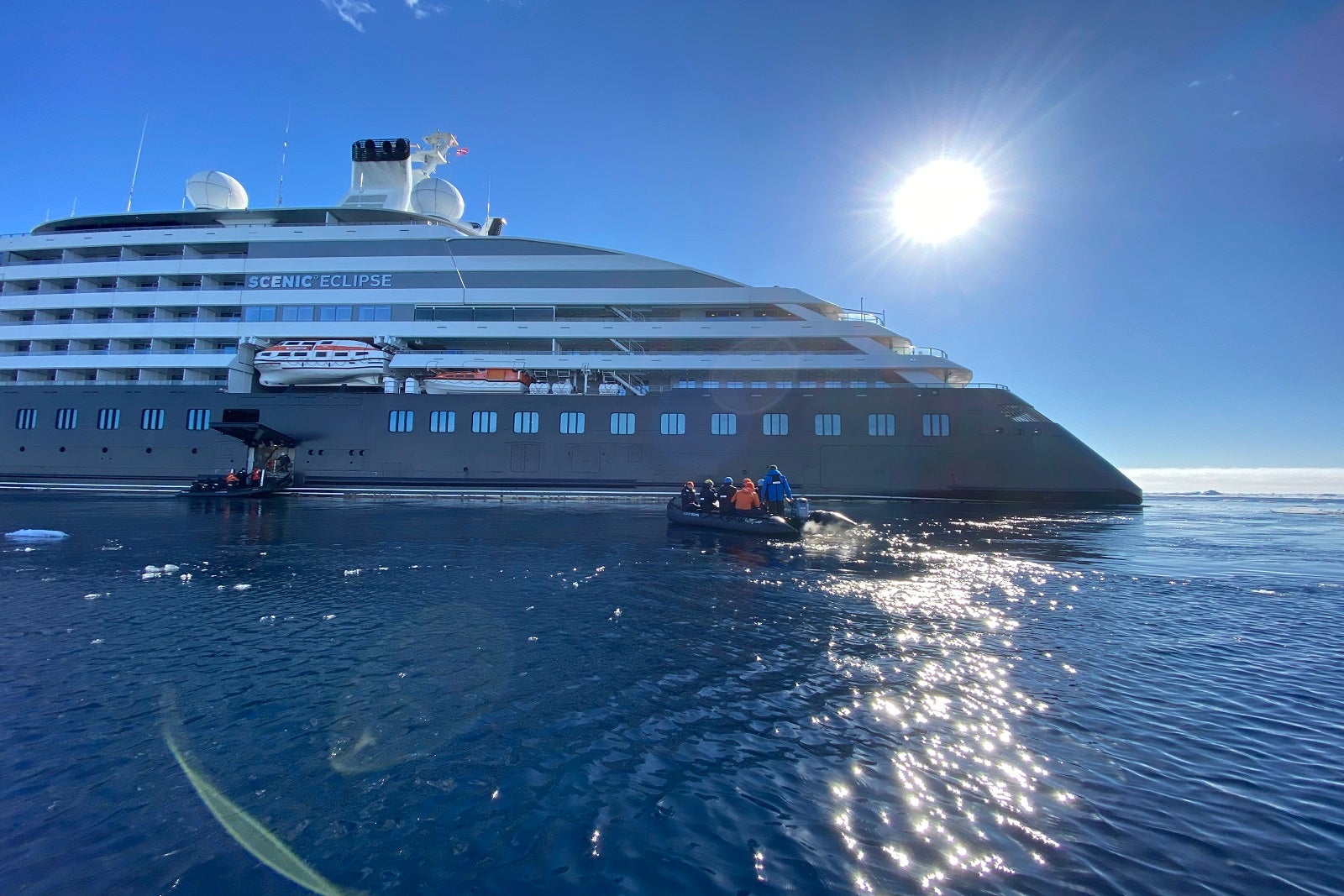
When you ask the average person what makes a vessel a ship versus a boat, they'll often tell you that it comes down to size. A ship is big; a boat is small. That seems to be the most common consensus, but those terms are arbitrary. What constitutes large and small?
In researching, I've discovered there's no official length at which a vessel becomes a ship. Sources cite everything from 100 feet to 200 feet in length and everything in between.
In terms of height, some seafarers insist that any vessel with more than one deck is a ship, and anything with only a single deck is a boat, as presented by The Guardian via a reader in the paper's Semantic Enigmas section.
Another common size-related refrain — one that's used by the United States Naval Institute — is that if a vessel is large enough to carry other vessels, it's a ship.
"In general, a boat is a watercraft ... that is small enough to be carried on board a larger one, and that larger one is a ship," said Lt. Cmdr. Thomas J. Cutler in a blog post on the USNI's website . "This is sometimes expressed this way: 'A ship can carry a boat, but a boat can never carry a ship.'"
Vessel tonnage
Tonnage is another determinant some entities use to qualify vessels as ships instead of boats. In fact, the maritime information website Marine Insight claims it's one of the most important factors to consider.
Vessels of more than 500 tons, regardless of size, are ships, according to the site.
Where the vessel sails
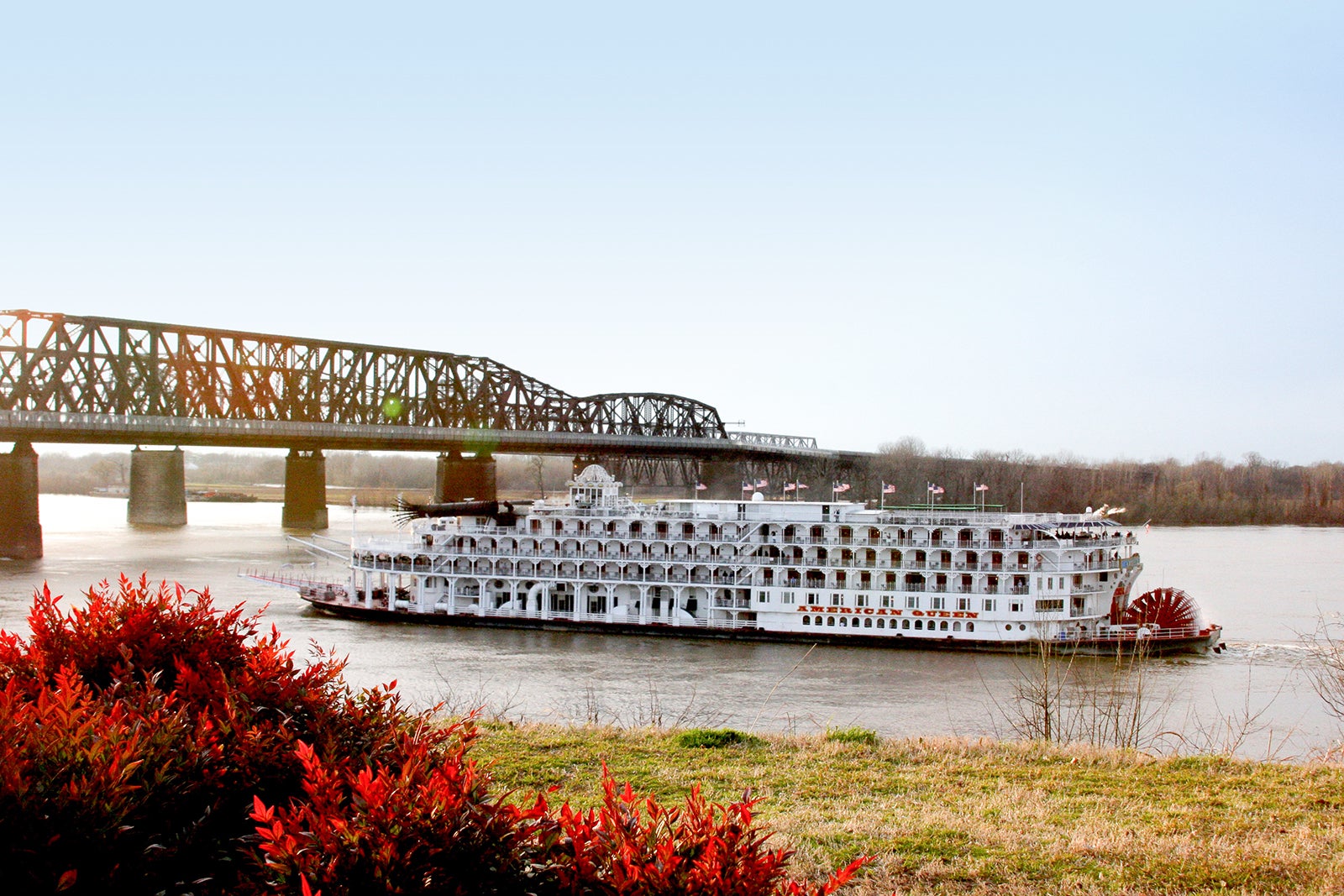
I recently sailed on my first U.S. river cruise, during which a lecturer explained that boats are specifically built for inland waterways, such as lakes and rivers. "This is a boat, despite its size," she said, also noting that it carries lifeboats (which would make it a ship by some definitions).
Supporting this theory is Scientific American , which quotes The Straight Dope (Cecil Adams, the self-proclaimed smartest man in the world) as saying, "With regard to motorized craft, a ship is a large vessel intended for oceangoing or at least deep-water transport, and a boat is anything else."
How the vessel corners
A handful of online query results say another way to tell a ship from a boat is by observing the direction in which it leans when it turns.
"A U.S. Navy rule of thumb is that ships lean towards the outside of a sharp turn, while boats lean towards the inside," The Maritime Post said. For a more relatable visual, think about a motorcycle versus a car. The former leans in as you go around a turn; the latter leans away from the center of the turn.
Vessel propulsion and design
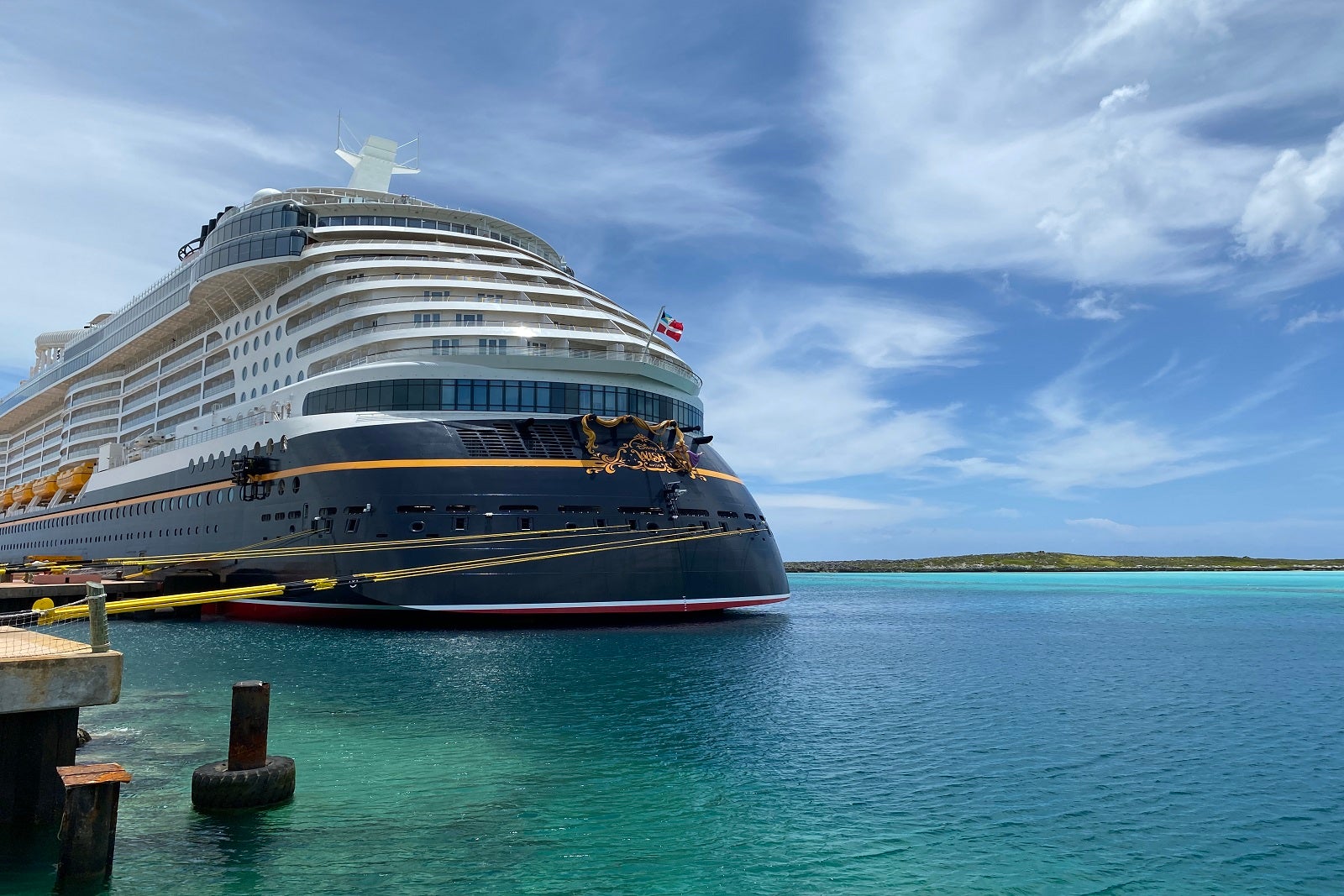
As you might expect from a larger vessel, ships often have more complex construction than boats. They also have more machinery on board than boats do, whether that's in the way of navigation or engine room accouterments.
Further, how they're propelled might differ. Most modern-day ships are powered by engines, whereas boats can be moved by anything from oars or sails to engines, according to Marine Insight .
Number of masts on the vessel
In terms of sailing vessels, if a rig has three masts or more, it's considered a ship, per the New Bedford Whaling Museum in Massachusetts. To qualify, it must also have square sails on all masts.
Obviously, most modern-day cruise ships don't have masts. (Exceptions are ships from Windstar and Star Clippers.) Although this rule is less relevant today, it does come up frequently in maritime circles when discussing the difference between a ship and a boat.
Bottom line
There's no hard-and-fast rule when it comes to determining whether a vessel is a ship or a boat. Generally, the most common ideas about this seem to revolve around size: tonnage, number of decks or whether or not the vessel can carry other boats.
Lots of people will have opinions about the "correct" criteria, but the bottom line is that you should never refer to a cruise ship as a boat if it carries travelers on the ocean for vacation.
Got more cruise questions? TPG has answers:
- Man overboard: Why do people fall off cruise ships?
- What is baked Alaska, and why is it paraded around cruise ships?
- What are the largest cruise ships in the world?
- What is a lido deck on a cruise ship?
- What is tendering on a cruise ship?
- What's the difference between a cruise concierge and a butler?
- What is a gentleman host on a cruise?
- What is the Jones Act and how does it affect cruise ships?
- What's a cruise cabin guarantee and will it save you money?

Ship vs. Yacht — What's the Difference?
Difference Between Ship and Yacht
Table of contents, key differences, comparison chart, navigation areas, design priorities, crew requirements, compare with definitions, common curiosities, what is the primary purpose of a ship, do you need a professional crew to operate a ship, can a yacht sail across the ocean, where can ships typically dock, is a yacht considered a luxury, which is more expensive to maintain, a ship or yacht, can a yacht be as big as a ship, can ships be used for personal purposes, is a cruise ship considered a ship or yacht, which is faster, a ship or yacht, do yachts have a specific size range, share your discovery.

Author Spotlight
Popular Comparisons

Trending Comparisons

New Comparisons

Trending Terms


The Key Differences Between a Yacht and a Boat | Yacht vs Boat
Olivia benjamin.
- June 20, 2023
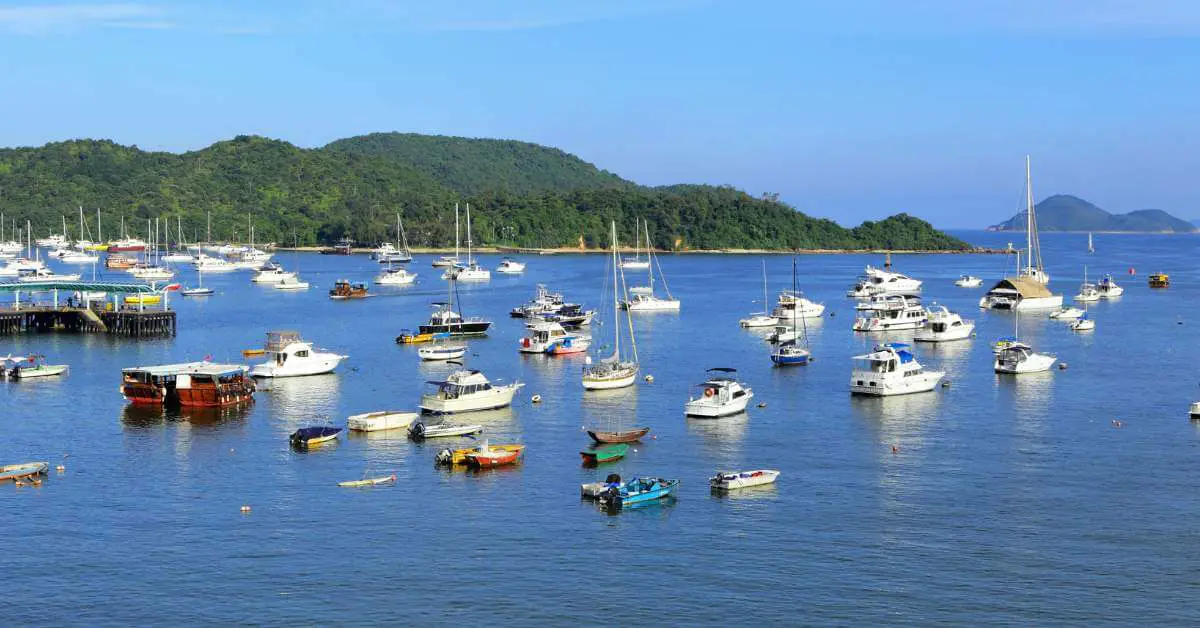
It’s a common misconception to assume that there is no difference between a yacht and a boat, but there are notable differences between these two types of watercraft. Yachts are generally larger and more luxurious than boats, typically smaller and designed for recreational activities such as fishing or water sports.
While yachts and boats serve as leisure vessels on the water, yachts often boast additional amenities like air conditioning, multiple bedrooms, and even hot tubs. Conversely, boats tend to have simpler features, such as a small cabin or storage space for fishing equipment.
Gaining a deeper understanding of these differences can assist you in determining whether to choose a yacht or a boat based on your unique needs and preferences. So, let’s dive deeper into the distinctions between these two types of vessels.
What is a Yacht and What is a Boat?
Boats and yachts are two terms that are often used interchangeably, but there are distinct differences between them. Let’s examine the differences between boats and yachts.
What is a Yacht?
You might think of a yacht as a luxurious vessel often used for leisure activities, like sailing the high seas or throwing lavish parties on board.
Yachts are typically larger than boats and have amenities such as multiple cabins, bathrooms, kitchens, and entertainment areas. They’re designed for comfort and style rather than speed or efficiency.
However, it’s important to note that not all yachts are the same. Some may be motorized, while others require sails to move through the water.
Moreover, there are several types of yachts, including racing yachts, cruising yachts, and mega yachts, with sizes ranging from 33 to over 160 feet. Each type caters to specific preferences and requirements, ensuring a tailored yachting experience.

What is a Boat?
A boat is a watercraft primarily designed to float, move, and navigate on water. It is a generic term that refers to a wide range of vessels used for various purposes such as recreation, transportation, military, commercial use, or fishing.
Boats come in different sizes, designs, and types, each serving a specific need. Small boats like kayaks and canoes are used for recreational purposes, while larger boats like tugboats serve commercial purposes.
Whether used for pleasure or work, boats offer great maneuverability. They can navigate in shallow waters and tight spaces and come equipped with navigation and other systems.

Boat vs Yacht | What is the difference between a Yacht and a Boat?
Do you want to know the differences between yachts and boats? Well, there are several key points to consider.
A boat is a generic term used to refer to any small watercraft. At the same time, a yacht is a specific type of boat often associated with luxury and recreational purposes. Many differences exist between yachts and boats, including the use, size, construction of these vessels, and many more.
Let’s explore these differences in detail to help you understand the unique qualities of each type of watercraft.
Difference in Size
Yachts are typically larger than boats, often measuring over 40 feet long. While boats come in various sizes, they often range from around 20-30 feet in length.
Boats are usually smaller and built for leisurely activities like fishing or cruising on lakes and rivers. On the other hand, yachts are designed for luxurious living at sea and are often equipped with multiple cabins, bathrooms, entertainment areas, and even swimming pools.
The size difference between yachts and boats also affects their handling of the water. Due to their large size and complex systems, yachts require experienced crews to operate them. Boats, on the other hand, can be easily handled by anyone with basic boating knowledge.
Difference in Use
While both vessels are designed for water travel but serve very different purposes, boats are typically smaller vessels used for recreational activities such as fishing, water sports, and short trips along the coast. They’re also commonly used for transportation in areas with many waterways.
Yachts, on the other hand, are much larger and more luxurious than most boats. They’re typically owned by wealthy individuals or companies and used for leisurely cruising or entertaining guests. Some yachts can even be chartered for special events such as weddings or corporate retreats.
Difference in Technology
While many boats rely on traditional engines or rowing, yachts often incorporate cutting-edge navigation, communication, and entertainment technology.
For example, some luxury yachts have state-of-the-art autopilot, radar and GPS systems that easily navigate even the most treacherous waters. Additionally, many yachts are equipped with satellite phones and other communication devices that allow passengers to stay connected no matter where they are.
Conversely, boats have basic technology geared towards recreational purposes, like fish finders or depth sounders. Older boats may still use traditional analog instruments for compass bearing and navigation.
Regardless of size or purpose, one thing is clear – technology plays a major role in differentiating between a yacht and a boat.
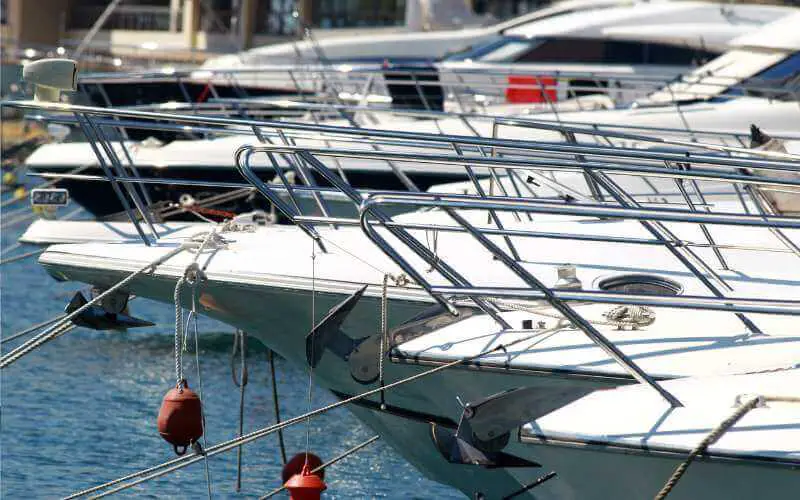
Differences in Power and Propulsion
When it comes to power and propulsion, yachts and boats have some key differences. Yachts are often equipped with larger, inboard engines designed for speed and endurance. In contrast, boats may have outboard motors that are smaller and better suited for recreational purposes.
Another key difference relates to the type of transmission used. Yachts often rely on multi-speed transmissions that allow the engine to operate at various speeds. Boats, on the other hand, may have simpler transmission systems that are designed for a lower level of performance.
The type of propulsion used is also important to consider. Yachts may be propelled by jets, controllable pitch propellers or other high-tech means, enabling them to perform well in various conditions. Boats typically rely on simpler propellers unsuited to more demanding environments.
Difference in Price
When it comes to price, yachts and boats are on opposite ends of the spectrum. Boats, being smaller and typically used for recreational purposes, can range from a few thousand dollars to a few hundred thousand dollars.
Yachts, on the other hand, are significantly more expensive. These vessels are often larger and more luxurious, costing several million to hundreds of millions of dollars.
The cost of owning a yacht goes beyond just the initial purchase price. Yachts require significant upkeep, including maintenance, insurance, and docking fees. However, yacht owners are often willing to pay high costs for the prestige and luxury of owning such vessels.
The Difference in Luxury and Comfort
Luxurious yachts have everything from plush interiors with high-end finishes to state-of-the-art entertainment systems. Many yachts also come equipped with luxurious bedrooms, bathrooms, and gourmet kitchens.
In addition to these features, yachts offer expansive decks and outdoor spaces for entertaining guests or simply enjoying the sun and sea breeze.
When it comes to luxury and comfort, there really is no comparison between a yacht and a boat. While boats may be functional for certain activities, such as fishing or water sports, they offer a different level of extravagance than you’ll find onboard a yacht.
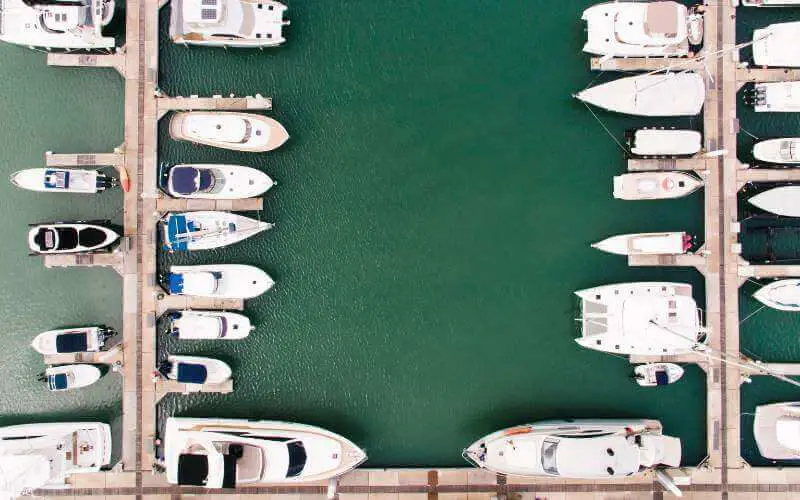
Frequently Asked Questions
What is the cost difference between purchasing a yacht and a boat.
Before you set sail, remember, a yacht is not just a bigger boat. The difference between purchasing a yacht and a boat can be significant, with yachts typically costing millions while boats range from thousands to hundreds of thousands.
Are there any legal requirements for operating a yacht versus a boat?
To operate a yacht, you may need a captain’s license and have to follow specific regulations depending on the size of your vessel. For boats, requirements vary by state and type of boat but are generally less strict.
How does the size of a yacht compare to the size of a boat?
Yachts are generally larger than typical boats, ranging from 33 feet to over 160 feet in length. However, the size distinction between a yacht and a boat needs to be clearly defined and can vary depending on personal perception.
Are there any specific maintenance requirements for a yacht that differ from those of a boat?
Yachts require meticulous maintenance to ensure they remain seaworthy. This includes regular inspections, cleaning, and repairs. These tasks are more complex and costly than those typically required for boats but crucial for the safety of all onboard.
What is the largest yacht in the world?
As of 2023, the largest yacht in the world is the SOMNIO , measuring 222 meters (728 feet) in length. The yacht is under construction and due for launch in mid-2024.
A yacht can be likened to a floating mansion, replete with lavish amenities and luxurious features, often owned by affluent individuals who relish time at sea. These vessels boast multiple decks, spacious cabins, and even swimming pools.
In contrast, boats come in various shapes and sizes, ranging from small dinghies to large commercial tugboats. While some boats offer basic amenities like a small cabin or restroom, they cannot compete with the luxury of a yacht.
The primary distinction between a yacht and a boat lies in luxury and comfort. Yachts epitomize extravagance, providing amenities akin to a high-end hotel suite, while boats prioritize practicality and functionality.
Ultimately, choosing between a yacht and a boat depends on personal preferences and intended use.
A Guide to Naming Your Boat: Finding the Perfect Name for Your Boat
Naming a boat is an important and personal decision every boat owner must make. Whether you have just purchased a

What is the Steering Wheel on a Ship Called?
The ship steering wheel holds a special place in maritime history, from tales of daring adventures on the high seas

Best Way to Avoid Overloading Your Boat and Keep Your Boat Capacity Under the Weight Limit
Embarking on a boating adventure brings a sense of excitement and freedom. However, ensuring the safety and stability of your
Workshop Insider Newsletter
Be a workshop insider get our latest collection of news and announcements delivered to your inbox..., latest articles.
- June 25, 2024
- Boats , Marine Engineering
- June 24, 2024
Navigating the Darkness: Understanding Boat Navigation Lights and the Different Types
Boat collisions: how to avoid collisions with another boat.
- September 12, 2023
The Ultimate Guide to Pipeliner Welding Hoods: Features, Benefits, Buying Guide, and Best Practices
- Welding Helmets Buying Guides
- September 11, 2023

- Privacy Policy
- Terms of Use
- Affiliate Disclosure

- Marine Engineering
- Yacht Services
- Yacht Surveys
- Yacht Electrician
- Megger Testing
- Marina Electrical Services
- Industrial Electrical
- Commercial Electrical
- Residential Building Electrical
- LED Lighting
- Industrial Lighting
- Electric Vehicle Charging Stations
- Sales & Parts
- Service Request
- Sales Request

- Privacy Policy
- Terms & Conditions
- RH Marine Group
What’s the Difference Between a Yacht and a Boat?
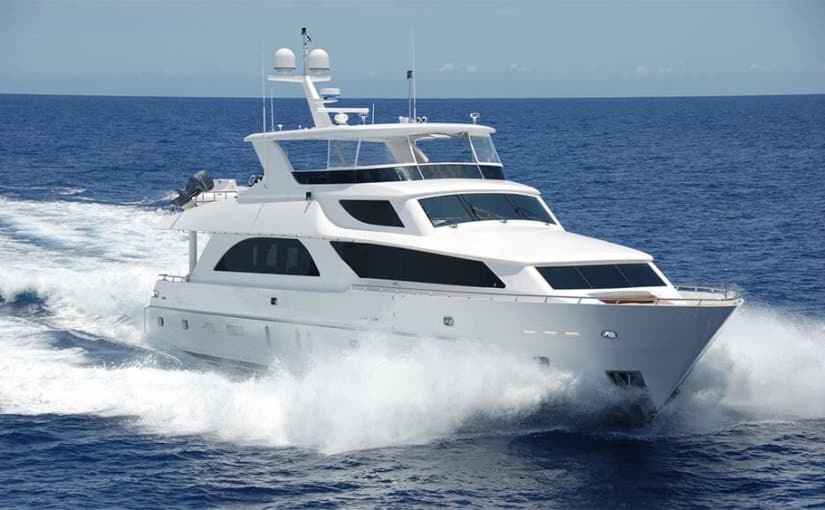
Many boating enthusiasts use the words boat and yacht interchangeably when in reality, they are very different terms. A yacht is a larger, recreational boat or ship. The word “Yacht” comes from Dutch origin and was originally defined as a light, and fast sailing vessel used by the Dutch navy to find and capture pirates. A boat, on the other hand, is smaller in size and can be anything from a fisherman’s boat to a sailboat.
When determining the difference between a yacht and a boat , there are a few main deciding factors including:
Size As previously mentioned, size matters when it comes to differentiating between a boat and a yacht. Yachts can range from about 35 feet in length all the way up to 160+ feet in length, however, most will be somewhere in the middle. Anything over 160 feet would be considered a “Superyacht”. Boats are generally anywhere from 15-30 feet in length.
Where they can operate Smaller boats are usually capable of operating in calm waters like lakes, rivers, and shallow harbors. Some larger boats, usually 20 – 30 feet in length, can also navigate more rough ocean waters. A yacht, on the other hand, is able to sail in deeper, ocean waters and deal with more turbulent seas. Due to a larger size, high tech yacht electronics and guidance instruments, protection from the elements, and a number of other features yachts are far more suitable for longer ocean trips.
Crew While a boat can be operated by just one captain, a yacht typically requires a full crew to help with navigation, maintenance, electronics and engineering, repairs and stewards to cater to the passengers. In reality, it’s a lot more like a small, private cruise service than an afternoon on the boat with your friends.
Propulsion Depending on the boat, it may operate solely using a sail and the wind, or one or more inboard or outboard motors. While some larger boats can mount very large engines to create some real speed on the water, these engines do not match the power of most yacht engines. Yacht engines are much larger in size, can produce considerably more power – in some cases up to 800hp, and are capable of running much longer distances.
Navigation and technology While some boats may have advanced marine electronics and navigation systems, it’s more of a requirement when it comes to yachts. When making trans oceanic trips it is not only important that you are able to navigate with precision, but also that you can detect other boats or objects that you may not be able to see and understand the performance of your vessel.
Tess Electric is a leading provider of marine electronics, marine electrical services , and marine engineering services to owners and crews of yachts and superyachts in Fort Lauderdale, FL. If you’re looking to work with an experienced team of marine electrical contractors, contact us today.
Recent Posts

We are a Marine Electrical Service Company servicing mostly in the Large Mega Yacht Industry and Marine Land Installations (marinas, resorts, apartments, docks, etc). We have mobile Technicians who cover the tri county area (Broward, Palm Beach and Dade) in their fleet of vehicles.

- Marine Electrical
- Land Division
- ShipServ Ship Supply
Our Services
- Fluorescent To LED Conversion
- All Land Services
- All Marine Services
Sales & Support
- Sales Request Form
Our Location
Tess Electrical LLC

Yacht vs Cruise Ship: Key Differences Explained
Many travelers look at luxury yacht rentals and cruise ships when planning a vacation at sea. But there are some major distinctions between these two options. Understanding the key differences can help you choose the best one to suit your needs and expectations.
Size and Capacity
The most obvious difference is size and guest capacity. Cruise ships are massive, housing 2000-6000 passengers.
Even small ships carry 600+ people. In contrast, chartered yachts max out around 12 guests, with typical capacities of 6-10. The intimate scale ensures an exclusive escape.
Itineraries and Flexibility
Cruises sail along fixed routes and strict schedules, whereas yacht charters offer total itinerary flexibility. Craft your own custom route with a captain. Spend more time in spots you love and bypass others. The only fixed elements are your start/end ports.
Onboard Experience
The onboard ambiance varies dramatically between the two. Cruise ships feel like floating cities with crowds everywhere. You’ll share amenities with thousands of fellow passengers. Chartered yachts provide a private, peaceful retreat catered to you. No queues or sharing.
Activities and Entertainment
Both offer plenty of amenities, but the vibe is different. Cruises offer fun activities like casinos and shows, while yachts provide relaxation and adventures like snorkeling and fishing. The choice depends on your interests.
Service and Cuisine
With thousands of guests, cruise staff and dining cannot provide truly personalized service. You get more staff interaction on a yacht, including a captain dedicated to your charter. Included in the experience is fine dining with customized menus and premium alcohol.
For an exclusive getaway on your terms, a private yacht charter reigns supreme. But mass market cruises suit travelers who enjoy crowds and scripted entertainment. Evaluate your priorities to choose the best seafaring vacation.
Booking and Costs
Booking a cruise is relatively simple through major cruise lines or agencies, while yacht charters require researching reputable brokers and charter companies, of which there are many. Cruise fares per person are lower, but a fully crewed yacht divided among guests can still be competitive. Keep costs variable by booking a bareboat yacht charter.
Destinations and Departure Ports
Cruise ships certainly provide a wide variety of itineraries, but their large size limits them to major cruise ports. Yachts can access small coves, secluded islands, and exotic locales that mega-ships can’t reach. Many more departure ports are accessible for yacht charters too.
Onboard Accommodations
Staterooms on a cruise provide basic comfort, often with an ocean view. Yachts feature lavish staterooms and master suites with hotel-style amenities. You’ll get complete privacy, often with en-suite bathrooms. Some large charter yachts rival small boutique hotels in luxury. .
Health and Safety
Mass gatherings on cruises can enable the rapid spread of illnesses like COVID or norovirus. Yachts provide isolation from crowds and allow immunocompromised guests to vacation safely. Strict protocols keep private yachts disinfected, and both options mandate safety drills and procedures.

Read Our Billfish Policy

Our Crews Prefer

Sverdlovsk Oblast
| in Russian. or , is a useful starting point for translations, but translators must revise errors as necessary and confirm that the translation is accurate, rather than simply copy-pasting machine-translated text into the English Wikipedia. provide in the accompanying your translation by providing an to the source of your translation. A model attribution edit summary is to the . . |
| Свердловская область | |
| Coordinates: 61°20′E / 58.700°N 61.333°E / 58.700; 61.333 | |
| Country | |
| Administrative center | |
| Government | |
| • Body | |
| • | |
| Area | |
| • Total | 194,307 km (75,022 sq mi) |
| • Rank | |
| Population ( ) | |
| • Total | 4,268,998 |
| • Estimate | 4,325,256 |
| • Rank | |
| • Density | 22/km (57/sq mi) |
| • | 85.8% |
| • | 14.2% |
| ( ) | |
| RU-SVE | |
| 66, 96, 196 | |
| ID | 65000000 |
| Official languages | |
| Website | |
Natural resources
Early history, medieval history and russian expansion, rise of the mining-metallurgical era, soviet ural, post-soviet transition, administrative divisions, demographics, settlements, ethnic groups, chairmen of the oblast duma, chairmen of the house of representatives of the legislative assembly, economy and transportation, sister relationships, notable people, external links.
| any . Please help by . Unsourced material may be challenged and . ) ) |

Most of the oblast is spread over the eastern slopes of the Middle and North Urals and the Western Siberian Plain . Only in the southwest does the oblast stretch onto the western slopes of the Ural Mountains .
The highest mountains all rise in the North Urals, Konzhakovsky Kamen at 1,569 metres (5,148 ft) and Denezhkin Kamen at 1,492 metres (4,895 ft) . The Middle Urals is mostly hilly country with no discernible peaks; the mean elevation is closer to 300 to 500 metres (980 to 1,640 ft) above sea level. [9] Principal rivers include the Tavda , the Tura , the Chusovaya , and the Ufa , the latter two being tributaries of the Kama .
Sverdlovsk Oblast borders with, clockwise from the west, Perm Krai , the Komi Republic , Khanty–Mansi Autonomous Okrug , Tyumen Oblast , Kurgan , and Chelyabinsk Oblasts , and the Republic of Bashkortostan .
The area is traversed by the northeasterly line of equal latitude and longitude.
Rich in natural resources, the oblast is especially famous for metals ( iron , copper , gold , platinum ), minerals ( asbestos , gemstones , talcum ), marble and coal . It is mostly here that the bulk of Russian industry was concentrated in the 18th and 19th centuries.
The area has continental climate patterns, with long cold winters (average temperatures reaching −15 °C (5 °F) to −25 °C (−13 °F) on the Western Siberian Plain) and short warm summers. Only in the southeast of the oblast do temperatures reach +30 °C (86 °F) in July.
- You can help expand this section with text translated from the corresponding article in Russian . (November 2020) Click [show] for important translation instructions. View a machine-translated version of the Russian article.
| in Russian. a machine-translated version of the Russian article. or , is a useful starting point for translations, but translators must revise errors as necessary and confirm that the translation is accurate, rather than simply copy-pasting machine-translated text into the English Wikipedia. to this template: there are already 937 articles in the , and specifying topic= will aid in categorization. provide in the accompanying your translation by providing an to the source of your translation. A model attribution edit summary is to the . . |

The territory of the region has been inhabited since ancient times. Numerous sites of ancient people were discovered, dating from the Paleolithic to the Iron Age. The Upper Paleolithic includes the Garinsky site on the right bank of the Sosva river near the village of Gari , the site in the Shaitansky grotto, and the site in the Bezymyanny cave (X millennium BC). [10] [11] In 1890, the 11 thousand years old (Mesolithic) Shigir idol was discovered. [12]
A settlement and a burial ground in the Kalmatsky Brod tract are located on the right bank of the Iset river and date back to the Sarmatian time (from the 3rd century BC to the 2nd century AD). They belong to the Kalmak archaeological culture. In the Kalmatsky Brod burial ground, the skeletal skulls were strongly deformed by tight bandaging in early childhood, which indicates the penetration of steppe ethnic elements to the north. [13]

There are numerous pictograms on the Koptelovsky stone, on the Oblique stone, on the Two-eyed stone, Starichnaya, Serginskaya, the rock paintings of the Bronze Age on the Neyva River, Tagil River (villages Brekhovaya, Gaevaya, Komelskaya), rock carvings on Shaitan-Kamen on the right bank of the Rezh river tied to indigenous Ural population, possibly speakers of a Ugric language . [14] [15] The Gostkovskaya Pisanitsa refers to the Middle Ages. [12]
Before the first Russian colonists arrived to the region, it was populated by various Turkic and Ugrian tribes. By the 16th century, when the Middle Urals were under influence of various Tatar khanates, the strongest local state was the Vogul Pelym principality with its center in Pelym .
The Russian conquest of the Khanate of Kazan in the 1550s paved the way further east, which was now free from Tatar depredations (see Yermak Timofeyevich ). The first surviving Russian settlements in the area date back to the late 16th – early 17th centuries ( Verkhoturye , 1598; Turinsk , 1600; Irbit , 1633; Alapayevsk , 1639). At that time, those small trading posts were governed under Siberian administration in Tobolsk . After the 1708 administrative reform, Verkhoturye, Pelym and Turinsk became a part of the new Siberian Governorate , in 1737 their territories were assigned to the Kazan Governorate .
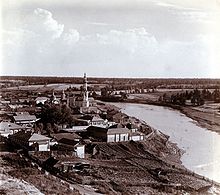
During the 18th century, rich resources of iron and coal made Ural an industrial heartland of Russia. After getting control over Ural mines, the Demidov family put the region in the forefront of Russian industrialization. Yekaterinburg , Nevyansk and Tagil ironworks, founded in the 1700s to 1720s, soon joined the ranks of the major producers in Europe. Throughout the 18th and 19th century those newly founded factory towns enjoyed a status of special mining-metallurgical districts allowed to have a certain rate of financial and proprietary autonomy. During the 1781 reform middle Ural finally got its own regional administration in the form of the Perm Governorate .
When in 1812 the Russian government legalized gold digging for its citizens, Middle Ural became a center of gold mining. Entrepreneurs of the Perm Governorate also started the gold rush in West Siberia, soon Yekaterinburgers began to dominate the Russian market of precious metals and gemstones.
After the emancipation reform of 1861 , major Middle Uralian industries that were heavily dependent on serf labor entered decline, although it also allowed light industry to thrive. In 1878, Perm and Yekaterinburg were connected with a railroad, in 1888, railroads reached Tyumen , and ultimately, in 1897, Yekaterinburg joined the Trans-Siberian network . Emergence of railroad transportation helped to revitalize economy of Ural.
The Bolsheviks established their power in Yekaterinburg and Perm during the first days of the October Revolution of 1917. In early 1918 the dethroned Czar Nicholas II and his family were transferred under custody to Yekaterinburg. Local Bolsheviks decided autonomously to execute the royal family on July 17, 1918, to prevent its rescue of by the approaching White Army forces. Ten days later Yekaterinburg was captured by the Czechoslovak troops of Sergei Wojciechowski . For the next year the Anti-bolshevik forces took control over the region. On 19 August 1918, Provisional Government of Ural was formed in Yekaterinburg by a coalition of liberal and democratic socialist parties, it was supposed to serve as a buffer between the Komuch and Provisional Siberian governments. After the Kolchak coup d'état in Omsk in November 1918, the Government of Ural was disbanded.
In July 1919, in the course of the Yekaterinburg offense, Yekaterinburg and the surrounding areas were recaptured by the Red Army forces under command of Vasily Shorin . On the July 15th, the Perm Governorate was split by the Soviets and the east, for the first time in history, became a separate region, the Yekaterinburg Governorate. It was soon abolished and replaced by the Ural Oblast (1923-1934).
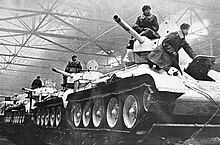
In the 1930s many industrial enterprises were established and built with the help of forced labour. [16] Local industry received another impetus during World War II, when important producing facilities were relocated here from the European part of Russia to safeguard them from the advancing Germans (for example, IMZ-Ural , Kamensk-Uralsky Metallurgical Works ). In the postwar period much of the region was off-limits to foreigners. It was over Sverdlovsk that the American U-2 spy plane pilot Gary Powers was shot down on May 1, 1960, while on a reconnaissance mission.
In 1979, there was an anthrax outbreak caused by an accident in a facility to develop biological weapons.
In 1993, Governor Eduard Rossel responded to perceived economic inequality by attempting to create a " Ural Republic ." Sverdlovsk led the "Urals Five" ( Kurgan Oblast , Orenburg Oblast , Perm Krai , Chelyabinsk Oblast and Sverdlovsk) in a call for greater regional power. They argued that the oblasts deserved as much power as the ethnic homeland republics . The Urals Republic Constitution went into effect on October 27, 1993. Then Russian President Boris Yeltsin dissolved the Urals Republic and the Sverdlovsk Parliament 10 days later (on November 9).

Population : 4,268,998 ( 2021 Census ) ; [5] 4,297,747 ( 2010 Russian census ) ; [17] 4,486,214 ( 2002 Census ) ; [18] 4,716,768 ( 1989 Soviet census ) . [19]
Vital statistics for 2022: [20] [21]
- Births: 39,958 (9.4 per 1,000)
- Deaths: 59,316 (13.9 per 1,000)
Total fertility rate (2022): [22] 1.56 children per woman
Life expectancy (2021): [23] Total — 68.79 years (male — 63.72, female — 73.80)
| | |||||||||
|---|---|---|---|---|---|---|---|---|---|
| Rank | Municipal pop. | ||||||||
| | 1 | 1,493,749 | | ||||||
| 2 | 349,008 | ||||||||
| 3 | 166,086 | ||||||||
| 4 | 120,778 | ||||||||
| 5 | 95,861 | ||||||||
| 6 | 80,357 | ||||||||
| 7 | 72,688 | ||||||||
| 8 | 62,908 | ||||||||
| 9 | 61,533 | ||||||||
| 10 | 60,979 | ||||||||
| Year | ||
|---|---|---|
| 1926 | 3,151,883 | — |
| 1939 | 2,331,176 | −26.0% |
| 1959 | 4,044,416 | +73.5% |
| 1970 | 4,319,741 | +6.8% |
| 1979 | 4,453,491 | +3.1% |
| 1989 | 4,716,768 | +5.9% |
| 2002 | 4,486,214 | −4.9% |
| 2010 | 4,297,747 | −4.2% |
| 2021 | 4,268,998 | −0.7% |
| Source: Census data | ||
There were twenty-one recognized ethnic groups of more than two thousand persons each in the oblast. Residents identified themselves as belonging to a total of 148 different ethnic groups, including: [17]
- 3,684,843 Russians (90.6%);
- 143,803 Tatars (3.5%);
- 35,563 Ukrainians (0.9%);
- 31,183 Bashkirs (0.8%);
- 23,801 Mari (0.6%);
- 14,914 Germans (0.4%);
- 14,215 Azerbaijanis (0.3%);
- 13,789 Udmurts (0.3%);
- 11,670 Belarusians (0.3%);
- 11,510 Chuvash (0.26%);
- 11,501 Armenians (0.3%);
- 11,138 Tajiks (0.3%);
- 9,702 Mordovians (0.22%);
- 9,358 Uzbeks (0.2%);
232,978 people were registered from administrative databases, and could not declare an ethnicity. It is estimated that the proportion of ethnicities in this group is the same as that of the declared group. [24]
| Religion in Sverdlovsk Oblast as of 2012 (Sreda Arena Atlas) | ||||
|---|---|---|---|---|
| 33% | ||||
| Other | 2.1% | |||
| Other | 5.8% | |||
| 2.9% | ||||
| and other native faiths | 1.3% | |||
| 36.1% | ||||
| and | 13% | |||
| Other and undeclared | 5.8% | |||
Christianity is the largest religion in Sverdlovsk Oblast. According to a 2012 survey [25] 43% of the population of Sverdlovsk Oblast adheres to the Russian Orthodox Church , 5% are nondenominational Christians (excluding Protestant churches), 3% are Muslims , 2% are Orthodox Christian believers without belonging to any Church or are members of other Orthodox churches , 1% are adherents of the Slavic native faith (Rodnovery), and 0.3% are adherents of forms of Hinduism ( Vedism , Krishnaism or Tantrism ). In addition, 36% of the population declares to be "spiritual but not religious", and 9.7% is atheist . [25]
The most important institutions of higher education include Ural Federal University , Ural State Medical University , Ural State University of Economics , Ural State Law University , Ural State Mining University and Ural State Academy of Architecture and Arts , all located in the capital Yekaterinburg.

The oblast's Charter, adopted on 17 December 1994, with subsequent amendments, establishes the oblast government. The Governor is the chief executive, who appoints the Government, consisting of ministries and departments. The Chairman of the Government, commonly referred to as the Prime Minister, is appointed with the consent of the lower house of the legislature , a process similar to the appointment of the federal Prime Minister . But the Governor cannot nominate the same candidate more than twice, yet he/she can dismiss the house after three failed attempts to appoint the Premier. [ needs update ]
The Legislative Assembly is the regional parliament of Sverdlovsk Oblast. Until 2011, it was a bicameral legislature consisting of the Oblast Duma, the lower house , and the House of Representatives, the upper house . [27] Before the reform, members of the legislature served four-year terms with half of the Duma re-elected every two years. The Duma (28 members) was elected in party lists. The 21 members of the House of Representatives were elected in single-seat districts in a first-past-the-post system. The Legislative Assembly was the first bicameral legislature outside an autonomous republic, and the first regional legislature in Russia to elect members based on both party lists and single-seat districts . As of 2021, the Legislative Assembly is a unicameral legislature with a total of 50 seats, with half of the members elected by single-mandate constituencies and the other half elected in party lists for five-year terms. [28] [29]
Compliance with the Charter is enforced by the Charter Court. The existence of such regional courts in Russia, formed and functioning outside the federal judiciary, although challenged, has been upheld and persisted successfully in most constituent members of the Federation where they were established.
Until President Putin 's reforms of 2004, the Governor was elected by direct vote for terms of four years. Eduard Rossel has been the only elected governor (first elected governor for an oblast in Russia) since 1995 (appointed in 1991 and dismissed in 1993 by President Yeltsin ), re-elected in 1999 and 2003.
Since 2012, the oblast's Governor is Yevgeny Kuyvashev .
| Name | Period |
|---|---|
| Vyacheslav Surganov | April 20, 1996 – April 2000 |
| Yevgeny Porunov | April 26, 2000 – April 2002 |
| Nikolay Voronin | April 24, 2002 – April 23, 2003 |
| Alexander Zaborov (acting) | April 23, 2003 – July 3, 2003 |
| Nikolay Voronin | July 3, 2003 – March 23, 2010 |
| Elena Chechunova | March 23, 2010 – December 2011 |
| Name | Period |
|---|---|
| Aleksandr Shaposhnikov | April 20, 1996 – May 1998 |
| Pyotr Golenishchev | May 14, 1998 – April 2000 |
| Viktor Yakimov | April 21, 2000 – April 2004 |
| Yury Osintsev | April 6, 2004 – September 2007 |
| Lyudmila Babushkina | October 2007 – December 2011 |
In the 1990s, the Oblast's population was distinguished by relatively high support for parties and candidates of the right and democratic persuasion. In the 1996 presidential election, Boris Yeltsin , a native of the region who lived in Sverdlovsk until the 1980s, won over 70% of the vote. In the regional elections in 2010 in the Sverdlovsk Oblast, United Russia received minimal support relative to other regions - only 39.79% of votes. [30]
Even though it could do with modernizing, the region's industries are quite diverse. 12% of Russia's iron and steel industry is still concentrated in Sverdlovsk oblast. Iron and copper are mined and processed here, the logging industry and wood-processing are important, too.
The largest companies in the region include Ural Mining and Metallurgical Company , UralVagonZavod , Enel Russia , Nizhniy Tagil Iron and Steel Works , Federal Freight . [31]
Yekaterinburg is a prominent road, rail and air hub in the Ural region. As the economic slump subsided, several European airlines started or resumed flights to the city. These include Lufthansa , British Airways , CSA , Turkish Airlines , Austrian Airlines and Finnair . Malév Hungarian Airlines used to be among those carriers but they had to drop their flights to SVX ( IATA airport code for Sverdlovsk) after a few months.
The Alapaevsk narrow-gauge railway serves the communities around Alapayevsk .

- Bà Rịa–Vũng Tàu province , Vietnam
- Harbin , China
- Vladik Dzhabarov , Russian cyclist
- Andrey Fedyaev , Russian cosmonaut
- Yakov Sverdlov , a communist revolutionary after whom Sverdlovsk and subsequently Sverdlovsk Oblast were named.
- Church of the Purification of the Blessed Virgin Mary , a building of regional historical significance in Staropyshminsk village.
Related Research Articles
Chelyabinsk Oblast is a federal subject of Russia in the Ural Mountains region, on the border of Europe and Asia. Its administrative center is the city of Chelyabinsk.

Irbit is a town in Sverdlovsk Oblast, Russia, located 203 kilometers (126 mi) from Yekaterinburg by train or 250 kilometers (160 mi) by car, on the right bank of the Nitsa. Population: 37,009 (2021 Census) ; 38,357 (2010 Russian census) ; 43,318 (2002 Census) ; 51,708 (1989 Soviet census) .

Alapayevsk is a town in Sverdlovsk Oblast, Russia, located at the confluence of the Neyva and Alapaikha rivers. Population: 38,192 (2010 Russian census) ; 44,263 ; 50,060 ; 49,000 (1968).

Kushva is a town in Sverdlovsk Oblast, Russia, located in the Ural Mountains near Yekaterinburg. Population: 30,167 (2010 Russian census) ; 35,555 (2002 Census) ; 43,096 (1989 Soviet census) .
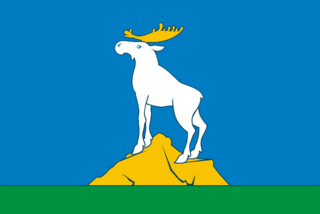
Nizhniye Sergi is a town and the administrative center of Nizhneserginsky District in Sverdlovsk Oblast, Russia, located on a rolling plain surrounded by the Ural Mountains, on the Serga River 120 kilometers (75 mi) from Yekaterinburg, the administrative center of the oblast. Population: 10,336 (2010 Russian census) ; 12,567 (2002 Census) ; 14,938 (1989 Soviet census) .

Verkhnyaya Pyshma is a town in Sverdlovsk Oblast, Russia, located 1 kilometer (0.62 mi) north of Yekaterinburg. Population: 59,749 (2010 Russian census) ; 58,016 (2002 Census) ; 53,102 (1989 Soviet census) .

Novouralsk is a closed town in Sverdlovsk Oblast, Russia, located on the eastern side of the Ural Mountains, about 70 kilometers (43 mi) north of Yekaterinburg, the administrative center of the oblast. Population: 85,522 (2010 Russian census) ; 95,414 (2002 Census) .

Krasnoufimsk is a town in Sverdlovsk Oblast, Russia, located on the Ufa River, 224 kilometers (139 mi) from Yekaterinburg. Population: 39,765 (2010 Russian census) ; 43,595 (2002 Census) ; 45,618 (1989 Soviet census) .

Revda is a town in Sverdlovsk Oblast, Russia. Population: 61,875 (2010 Russian census) ; 62,667 (2002 Census) ; 65,757 (1989 Soviet census) .

Sredneuralsk is a town under the administrative jurisdiction of the Town of Verkhnyaya Pyshma in Sverdlovsk Oblast, Russia, located on the shore of Iset Lake, at the head of the Iset River, 25 kilometers (16 mi) north of Yekaterinburg. Population: 20,449 (2010 Russian census) ; 19,555 ; 18,786 (1989 Soviet census) .

Kachkanar is a town in Sverdlovsk Oblast, Russia, located between the Isa and Vyya Rivers in the Tura River's basin, 205 kilometers (127 mi) north of Yekaterinburg, the administrative center of the oblast. Population: 41,426 (2010 Russian census) ; 44,664 (2002 Census) ; 48,251 (1989 Soviet census) . The town of Kachkanar is located at the foot of mountain Kachkanar.

Ivdel is a town in Sverdlovsk Oblast, Russia, located on the Ivdel River near its confluence with the Lozva River, 535 kilometers (332 mi) north of Yekaterinburg, the administrative center of the oblast. Population: 17,775 (2010 Russian census) ; 19,324 (2002 Census) ; 19,014 (1989 Soviet census) .

Severouralsk is a town in Sverdlovsk Oblast, Russia, located on the Vagran River at its confluence with the Kolonga River, 512 kilometers (318 mi) north of Yekaterinburg, the administrative center of the oblast. As of the 2010 Census, its population was 29,263.

Pelym is an urban locality under the administrative jurisdiction of the Town of Ivdel in Sverdlovsk Oblast, Russia. Population: 3,376 (2010 Russian census) ; 3,708 (2002 Census) .

Sukhoy Log is a town and the administrative center of Sukholozhsky District in Sverdlovsk Oblast, Russia, located on the eastern slopes of the Ural Mountains on the Pyshma River, 114 kilometers (71 mi) east of Yekaterinburg, the administrative center of the oblast. As of the 2010 Census, its population was 34,554.

Gornozavodsky District is an administrative district (raion) of Perm Krai, Russia; one of the thirty-three in the krai. Municipally, it is incorporated as Gornozavodsky Municipal District . It is located on the western slopes of the Ural Mountains in the east of the krai. The area of the district is 7,057 square kilometers (2,725 sq mi). Its administrative center is the town of Gornozavodsk. Population: 26,044 (2010 Russian census) ; 30,172 (2002 Census) ; 38,004 (1989 Soviet census) . The population of Gornozavodsk accounts for 46.3% of the district's total population.
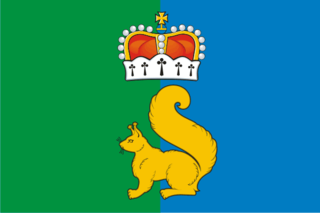
Garinsky District is an administrative district (raion), one of the thirty in Sverdlovsk Oblast, Russia. As a municipal division, it is incorporated as Garinsky Urban Okrug . The area of the district is 16,770 square kilometers (6,470 sq mi). Its administrative center is the urban locality of Gari. Population: 4,904 ; 7,832 (2002 Census) ; 9,381 (1989 Soviet census) . The population of Gari accounts for 50.4% of the district's total population. The main point of historical interest is the former town of Pelym, which was one of the first Russian settlements east of the Urals, marking the eastern terminus of the Cherdyn Road from Europe to Siberia.

Turinsky District is an administrative district (raion), one of the thirty in Sverdlovsk Oblast, Russia. As a municipal division, it is incorporated as Turinsky Urban Okrug . Its administrative center is the town of Turinsk. Population: 28,274 ; 32,540 (2002 Census) ; 40,749 (1989 Soviet census) . The population of Turinsk accounts for 63.4% of the district's total population.

Isetsky District is an administrative district (raion), one of the twenty-two in Tyumen Oblast, Russia. As a municipal division, it is incorporated as Isetsky Municipal District . It is located in the west of the oblast. The area of the district is 2,751 square kilometers (1,062 sq mi). Its administrative center is the rural locality of Isetskoye. Population: 26,061 ; 26,565 (2002 Census) ; 25,862 (1989 Soviet census) . The population of Isetskoye accounts for 28.7% of the district's total population.

Bisert is an urban locality in Nizhneserginsky District of Sverdlovsk Oblast, Russia. Population: 10,233 (2010 Russian census) ; 11,262 (2002 Census) ; 12,646 (1989 Soviet census) .
- ↑ Президент Российской Федерации. Указ №849 от 13 мая 2000 г. «О полномочном представителе Президента Российской Федерации в федеральном округе». Вступил в силу 13 мая 2000 г. Опубликован: "Собрание законодательства РФ", No. 20, ст. 2112, 15 мая 2000 г. (President of the Russian Federation. Decree # 849 of May 13, 2000 On the Plenipotentiary Representative of the President of the Russian Federation in a Federal District . Effective as of May 13, 2000.).
- ↑ Госстандарт Российской Федерации. №ОК 024-95 27 декабря 1995 г. «Общероссийский классификатор экономических регионов. 2. Экономические районы», в ред. Изменения №5/2001 ОКЭР. ( Gosstandart of the Russian Federation. # OK 024-95 December 27, 1995 Russian Classification of Economic Regions. 2. Economic Regions , as amended by the Amendment # 5/2001 OKER. ).
- ↑ Official website of the Governor of Sverdlovsk Oblast. Alexander Sergeyevich Misharin (in Russian)
- 1 2 3 Russian Federal State Statistics Service. Всероссийская перепись населения 2020 года. Том 1 [ 2020 All-Russian Population Census, vol. 1 ] (XLS) (in Russian). Federal State Statistics Service .
- ↑ "26. Численность постоянного населения Российской Федерации по муниципальным образованиям на 1 января 2018 года" . Federal State Statistics Service . Retrieved 23 January 2019 .
- ↑ "Об исчислении времени" . Официальный интернет-портал правовой информации (in Russian). 3 June 2011 . Retrieved 19 January 2019 .
- ↑ Official throughout the Russian Federation according to Article 68.1 of the Constitution of Russia .
- ↑ "Russia: Impact of Climate Change to 2030" (PDF) . Retrieved 25 April 2023 .
- ↑ Сериков Ю. Б. Новые находки раннего палеолита в Среднем Зауралье // Ранний палеолит Евразии: новые открытия // Материалы Международной конференции, Краснодар – Темрюк, 1–6 сентября 2008 г.
- ↑ Сериков Ю. Б. Следы раннего палеолита на территории Среднего Зауралья // Вестник археологии, антропологии и этнографии, 2015 № 4 (31)
- 1 2 Объекты культурного наследия Свердловской области (список)
- ↑ Сальников К. В. Древнейшие памятники истории Урала , 1952.
- ↑ Khimiya i Zhizn , 9, 1974, p. 80
- ↑ Писаницы Урала (in Russian). Ural.ru . Retrieved 26 December 2010 .
- ↑ V.A. Kravchenko: I chose freedom (1946)
- 1 2 Russian Federal State Statistics Service (2011). Всероссийская перепись населения 2010 года. Том 1 [ 2010 All-Russian Population Census, vol. 1 ] . Всероссийская перепись населения 2010 года [2010 All-Russia Population Census] (in Russian). Federal State Statistics Service .
- ↑ Federal State Statistics Service (21 May 2004). Численность населения России, субъектов Российской Федерации в составе федеральных округов, районов, городских поселений, сельских населённых пунктов – районных центров и сельских населённых пунктов с населением 3 тысячи и более человек [ Population of Russia, Its Federal Districts, Federal Subjects, Districts, Urban Localities, Rural Localities—Administrative Centers, and Rural Localities with Population of Over 3,000 ] (XLS) . Всероссийская перепись населения 2002 года [All-Russia Population Census of 2002] (in Russian).
- ↑ Всесоюзная перепись населения 1989 г. Численность наличного населения союзных и автономных республик, автономных областей и округов, краёв, областей, районов, городских поселений и сёл-райцентров [ All Union Population Census of 1989: Present Population of Union and Autonomous Republics, Autonomous Oblasts and Okrugs, Krais, Oblasts, Districts, Urban Settlements, and Villages Serving as District Administrative Centers ] . Всесоюзная перепись населения 1989 года [All-Union Population Census of 1989] (in Russian). Институт демографии Национального исследовательского университета: Высшая школа экономики [Institute of Demography at the National Research University: Higher School of Economics]. 1989 – via Demoscope Weekly .
- ↑ "Information on the number of registered births, deaths, marriages and divorces for January to December 2022" . ROSSTAT . Archived from the original on 2 March 2023 . Retrieved 21 February 2023 .
- ↑ "Birth rate, mortality rate, natural increase, marriage rate, divorce rate for January to December 2022" . ROSSTAT . Archived from the original on 2 March 2023 . Retrieved 21 February 2023 .
- ↑ Суммарный коэффициент рождаемости [ Total fertility rate ] . Russian Federal State Statistics Service (in Russian). Archived from the original (XLSX) on 10 August 2023 . Retrieved 10 August 2023 .
- ↑ "Демографический ежегодник России" [ The Demographic Yearbook of Russia ] (in Russian). Federal State Statistics Service of Russia (Rosstat) . Retrieved 1 June 2022 .
- ↑ "ВПН-2010" . www.perepis-2010.ru .
- 1 2 3 "Arena: Atlas of Religions and Nationalities in Russia" . Sreda, 2012.
- ↑ 2012 Arena Atlas Religion Maps . "Ogonek", № 34 (5243), 27/08/2012. Retrieved 21/04/2017. Archived .
- ↑ Formation of the legislative body of Sverdlovsk Oblast , old.zsso.ru
- ↑ General information , zsso.ru
- ↑ "Свердловская область" . council.gov.ru .
- ↑ "Результат единороссов по Свердловской области был самым худшим для партии власти" [ The result of United Russia in the Sverdlovsk region was the worst for the ruling party ] . Archived from the original on 10 June 2010 . Retrieved 2 January 2011 .
- ↑ "Sverdlovsk region Industries" . investinregions.ru . Retrieved 7 November 2018 .
- Sverdlovsk Oblast on Facebook
- Investment portal of Sverdlovsk Oblast
- (in Russian) Official website of the Government of Sverdlovsk Oblast
| (48) | |
|---|---|
| (24) | |
| (9) | |
| (4) | |
| (3) | |
| (1) | |
| Claimed by and considered by most of the international community to be part of Ukraine. Administratively subordinated to . Administratively subordinated to . | |
| (by ) (by ) (by ) |
| : • | |
| Administrative districts | |
| Cities and towns | |

IMAGES
VIDEO
COMMENTS
Any yacht that is 79 feet long or longer is classified as a "large yacht." Beyond a length of 130 feet, the vessel is typically called a "super yacht" (sometimes written as one word, superyacht). Sidebar: the current reigning champion for the longest yacht in the world is the super yacht Azzam, which is 590 feet in length. Another ...
Ultimately it comes down to this: all three of them are boats, but yachts are fancier, larger, and used for recreation, and ships are even larger, used commercially or by the navy, and are meant to cross oceans. The dividing line is sometimes thin, but generally speaking, when it comes to boats vs. ships.vs. yachts you can go by the adage " I ...
Ship vs Boat vs Yacht. In terms of size, boats are the smallest, followed by yachts, and then ships, which are the largest of the three. Boats are typically used for personal or recreational purposes, while ships are primarily employed for commercial or transportation activities. Yachts, on the other hand, cater to the luxurious and leisurely ...
Besides ship and yacht, boat is another commonly used term. The definition of a boat is much more vague and open to interpretation. Boats tend to be small personal craft and only carry a few people.
A ship's design is often more utilitarian compared to the luxury and comfort-focused design of a yacht. 5. Another notable difference between a yacht and a ship is in the ownership and operation. While yachts are generally owned by individuals or families for private use, ships often belong to corporations, governments, or large entities and ...
There are many nuances and subtle differences between water vessel types, but below are some of the main differences. In general, yachts are either sailing or motor vessels used for pleasure. Yachts are often luxurious and equipped with an overnight cabin. Boats can be either propelled sail or a motor and come in varying sizes.
It also refers to a tender to a bigger boat or yacht. "Ship" is a large commercial boat, often used for distance travel and transport of goods or passengers - cruise ship, container ship, etc. "Yacht" is typically a larger boat with luxury amenities used as a recreational vessel— motor yacht, sailing yacht. "Superyacht" is a ...
🚢 Quick summary. In casual use, the word boat is often used to refer to any watergoing vessel, regardless of its size or how it's powered. However, large oceanfaring watercraft—those that use multiple sails or engines—are more properly called ships.In contrast, the word ship isn't commonly applied to smaller craft. The word yacht is typically used to refer to any larger ...
A boat becomes a "ship" often once it's reached a specific size, which tends to be on the bigger side and suitable for sea travel. In most cases, ships serve as working vessels, such as transport or cruise liners. "Yachts" are also more substantial, but they're solely recreational vessels and often used for luxury purposes.
This is one of the major differences between a ship and a boat. Ships have a large crew which consists of the Captain who commands the vessel, Second and Third Officers, Engineers, Cooks etc. On the other hand, a smaller boat does not need many people. 5. Cargo Capacity.
Defining 'boat' seems to be stickier than 'yacht' or 'ship.'. We hear many captains referring to their 'boat,' irrespective of size, function, or fit-and-finish. Short of being deliberately confusing, it seems as though the word boat has become a colloquialism, pet phrase, or slang term for any floating object more complicated ...
Boats are usually associated with serving a purpose such as fishing or transportation. If a boat is a leisure vessel, it would usually be much smaller than a yacht. Leisure boats are often found on rivers, lakes, canals, or shallow coastal waters. These are something that most people get to enjoy from time to time and don't exactly come with ...
Although this rule is less relevant today, it does come up frequently in maritime circles when discussing the difference between a ship and a boat. Bottom line. There's no hard-and-fast rule when it comes to determining whether a vessel is a ship or a boat. Generally, the most common ideas about this seem to revolve around size: tonnage, number ...
The main difference between the two is that a yacht will always look and feel fancier than a boat or regular ship. If it appears and smells luxurious, given its minimum size, it is a yacht. Boats can be built for many things. But yachts are built mainly for fun and leisure.
Key Differences. A ship and a yacht are both waterborne vessels, but they serve distinctly different purposes and have varied features. Ships are generally built and designed for cargo transportation, passenger transport, or specialized tasks in the deep waters. On the other hand, yachts are more oriented towards personal or recreational use ...
Many differences exist between yachts and boats, including the use, size, construction of these vessels, and many more. Let's explore these differences in detail to help you understand the unique qualities of each type of watercraft. Difference in Size Yachts are typically larger than boats, often measuring over 40 feet long.
When determining the difference between a yacht and a boat, there are a few main deciding factors including: Size As previously mentioned, size matters when it comes to differentiating between a boat and a yacht. Yachts can range from about 35 feet in length all the way up to 160+ feet in length, however, most will be somewhere in the middle.
As nouns the difference between ship and yacht is that ship is a water-borne vessel generally larger than a boat while yacht is a slick and light ship for making pleasure trips or racing on water, having sails but often motor-powered. At times used as a residence offshore on a dock. As verbs the difference between ship and yacht is that ship is ...
The most obvious difference is size and guest capacity. Cruise ships are massive, housing 2000-6000 passengers. Even small ships carry 600+ people. In contrast, chartered yachts max out around 12 guests, with typical capacities of 6-10. The intimate scale ensures an exclusive escape.
On a recent summer's day, however, one ship gets tongues wagging - and it isn't the 95-metre (310-foot) CC-Summer, which boasts a 12-metre (39-foot) swimming pool and a basketball court on ...
Landmark indicating the border between Europe and Asia in Sverdlovsk Oblast. Most of the oblast is spread over the eastern slopes of the Middle and North Urals and the Western Siberian Plain.Only in the southwest does the oblast stretch onto the western slopes of the Ural Mountains.. The highest mountains all rise in the North Urals, Konzhakovsky Kamen at 1,569 metres (5,148 ft) and Denezhkin ...
14. Visit the Old Water Tower. Source: Photo by Wikimedia Commons user Dom kobb used under CC BY-SA 3.0. The old water tower is one of Yekaterinburg's oldest structures dating back to the 1800s and stands as a monument of industrial architecture. It is one of the city's endearing symbols.
Yekaterinburg is situated 1,036 miles (1,667 km) east of Moscow. Yekaterinburg, Russia. Near the village of Shartash, which was founded in 1672 by members of the Russian sect of Old Believers, an ironworks was established in 1721 and a fortress in 1722. In 1723 the new settlement was named Yekaterinburg in honor of Catherine I, the wife of ...
Sverdlovsk Oblast (Russian:Свердловская область,IPA: [svʲɪrdˈlofskəjə ˈobləsʲtʲ] ) is a federal subject (an oblast) of Russia located in the Ural Federal District. Its administrative center is the city of Yekaterinburg, formerly known as Sverdlovsk. Its population is 4,268,998 (according to the 2021 Census).